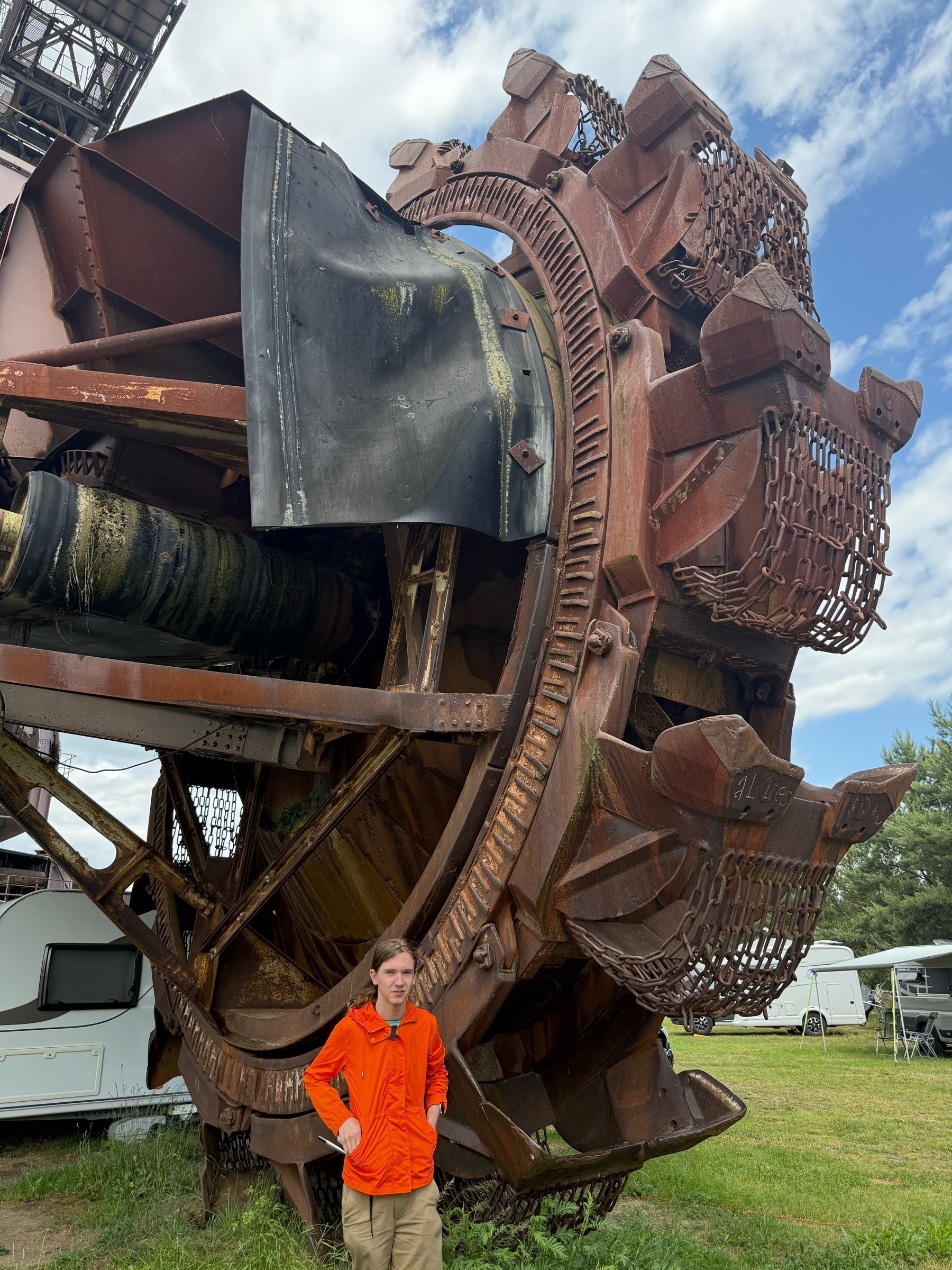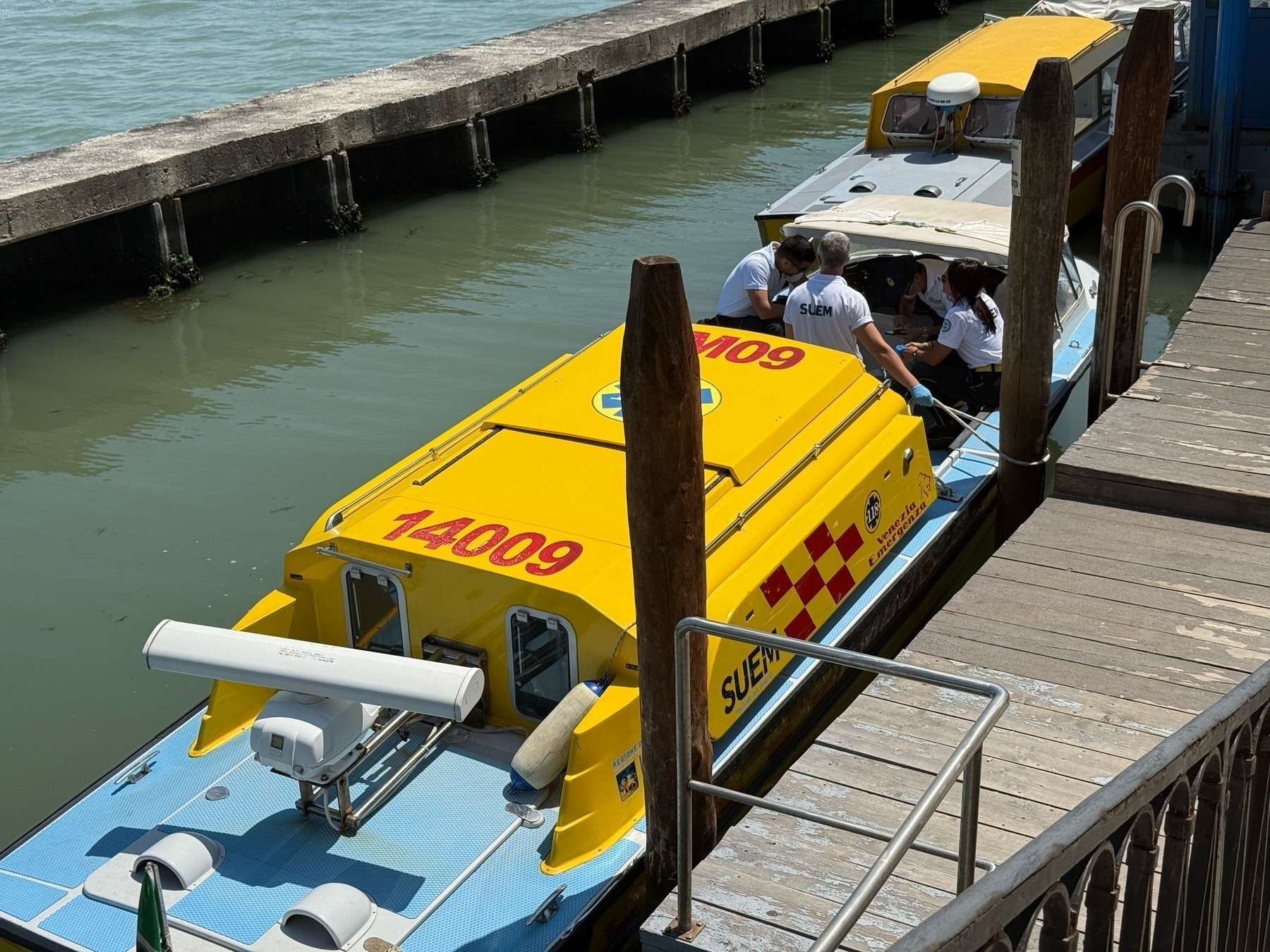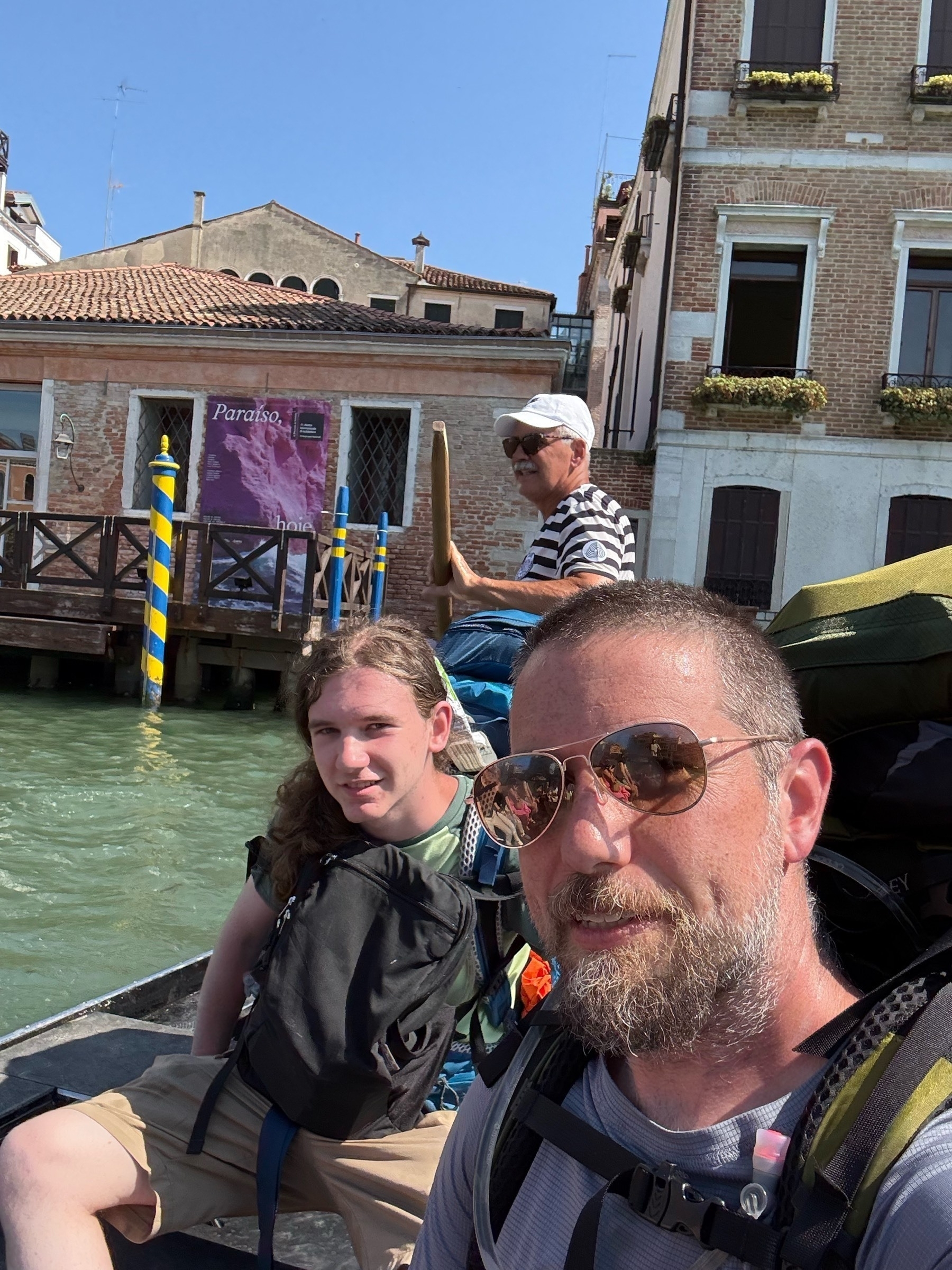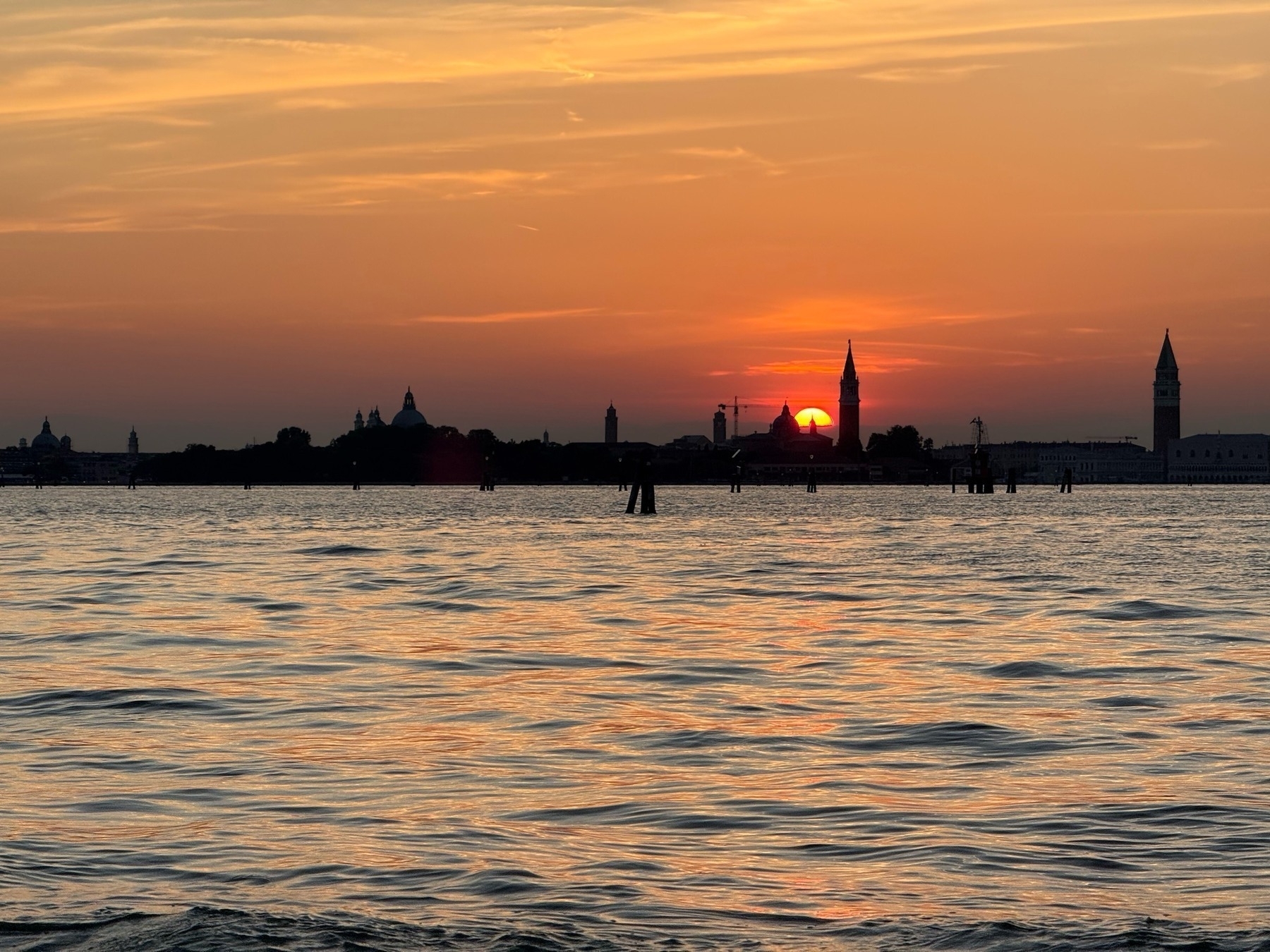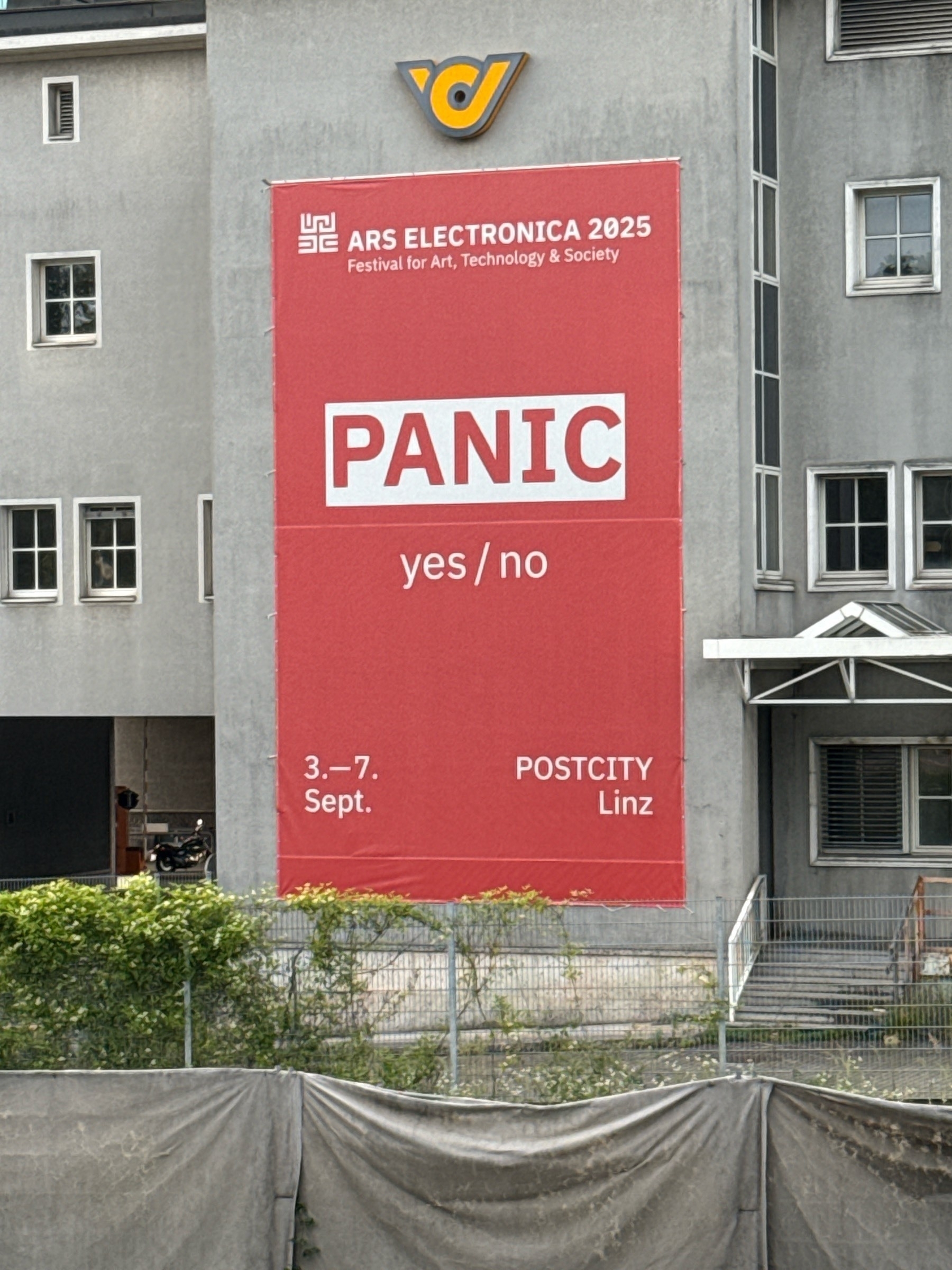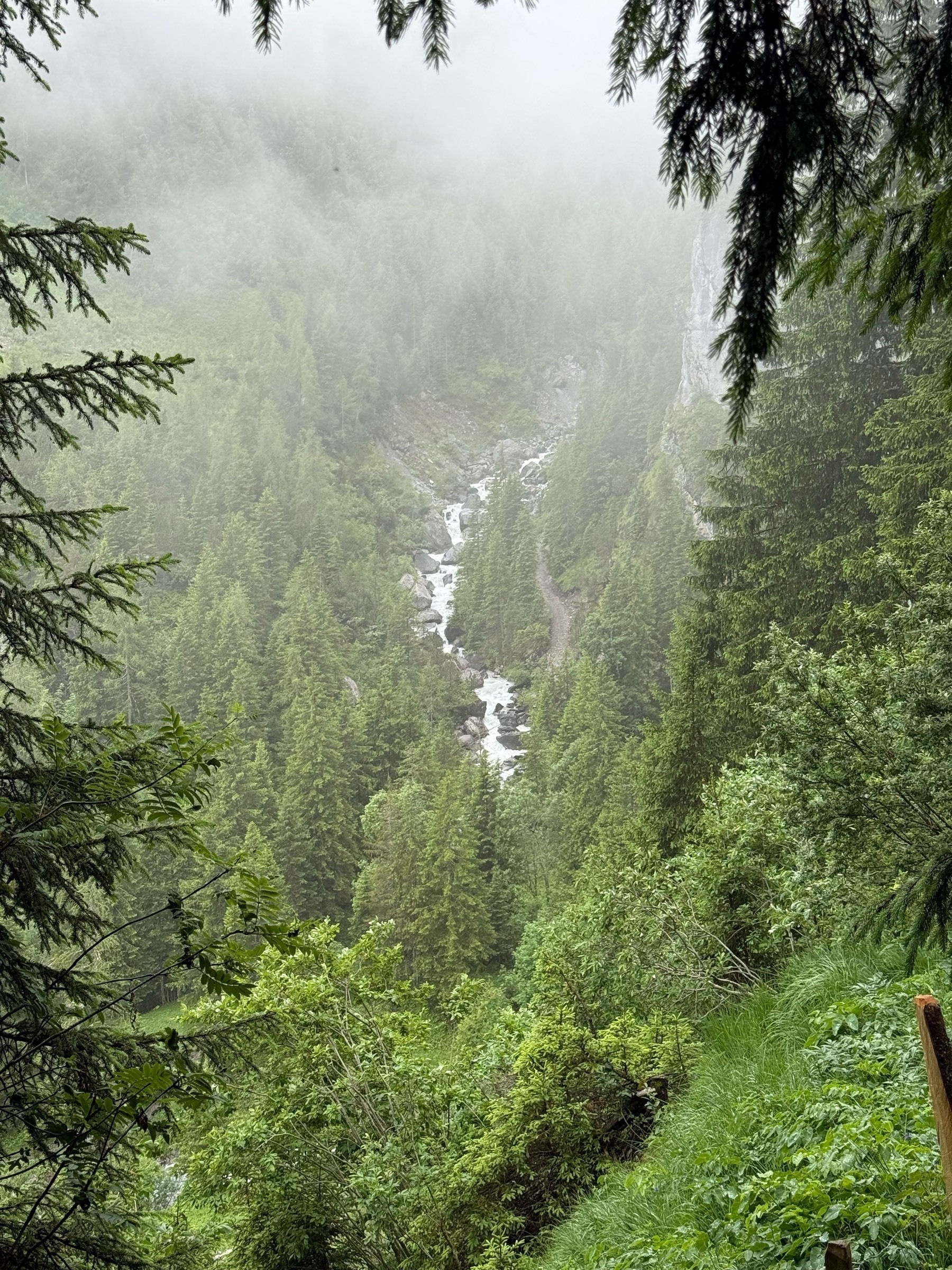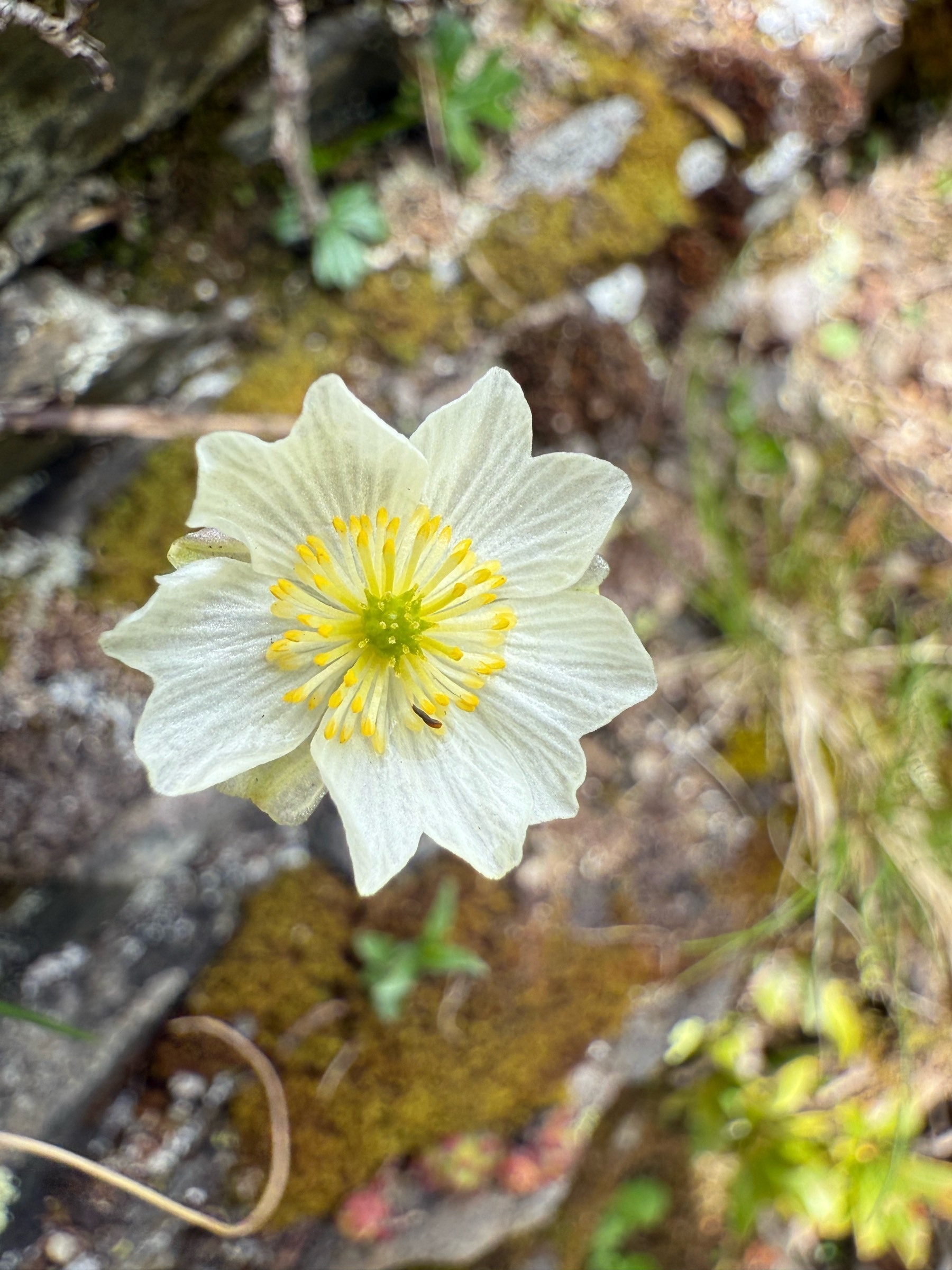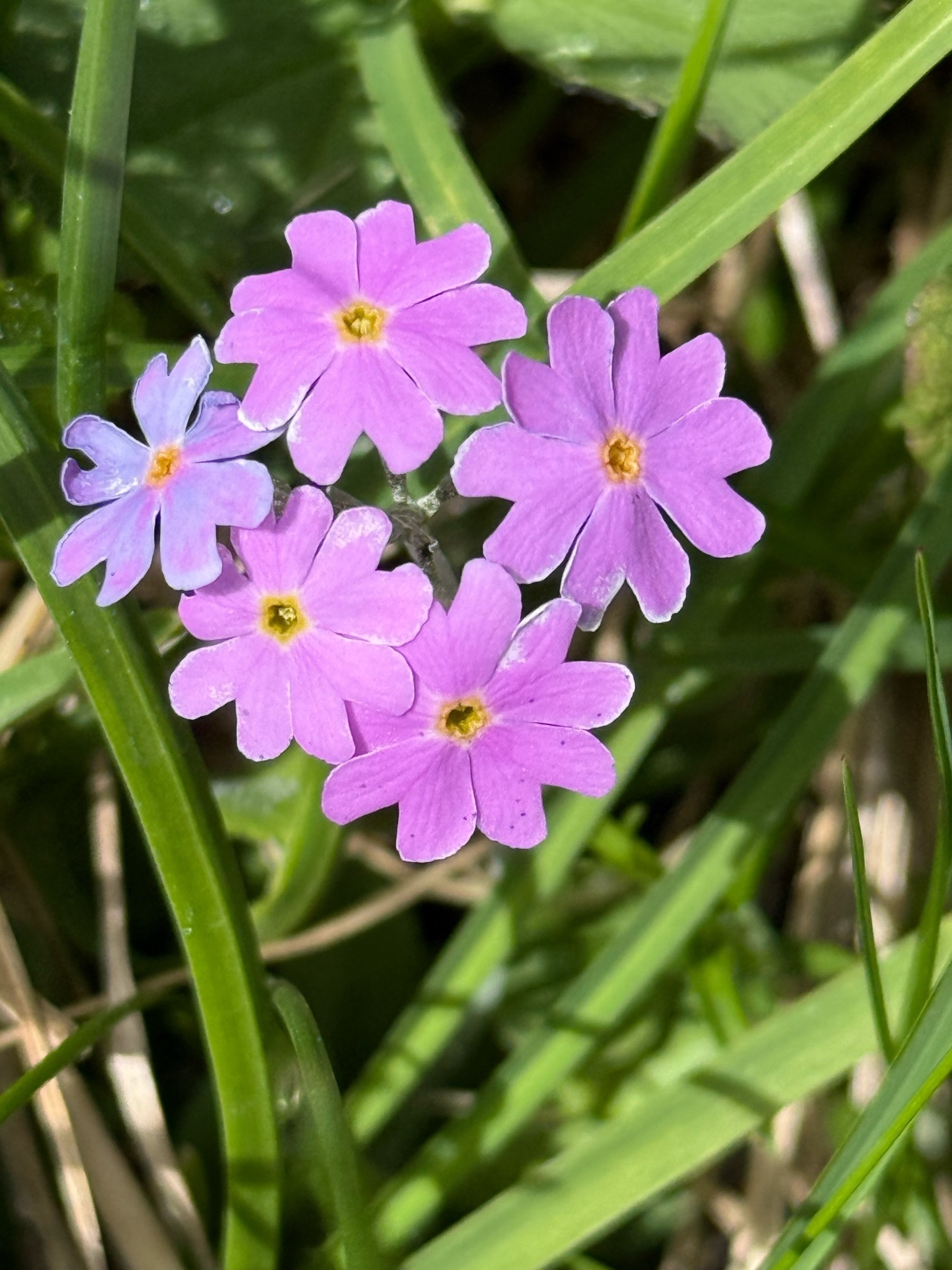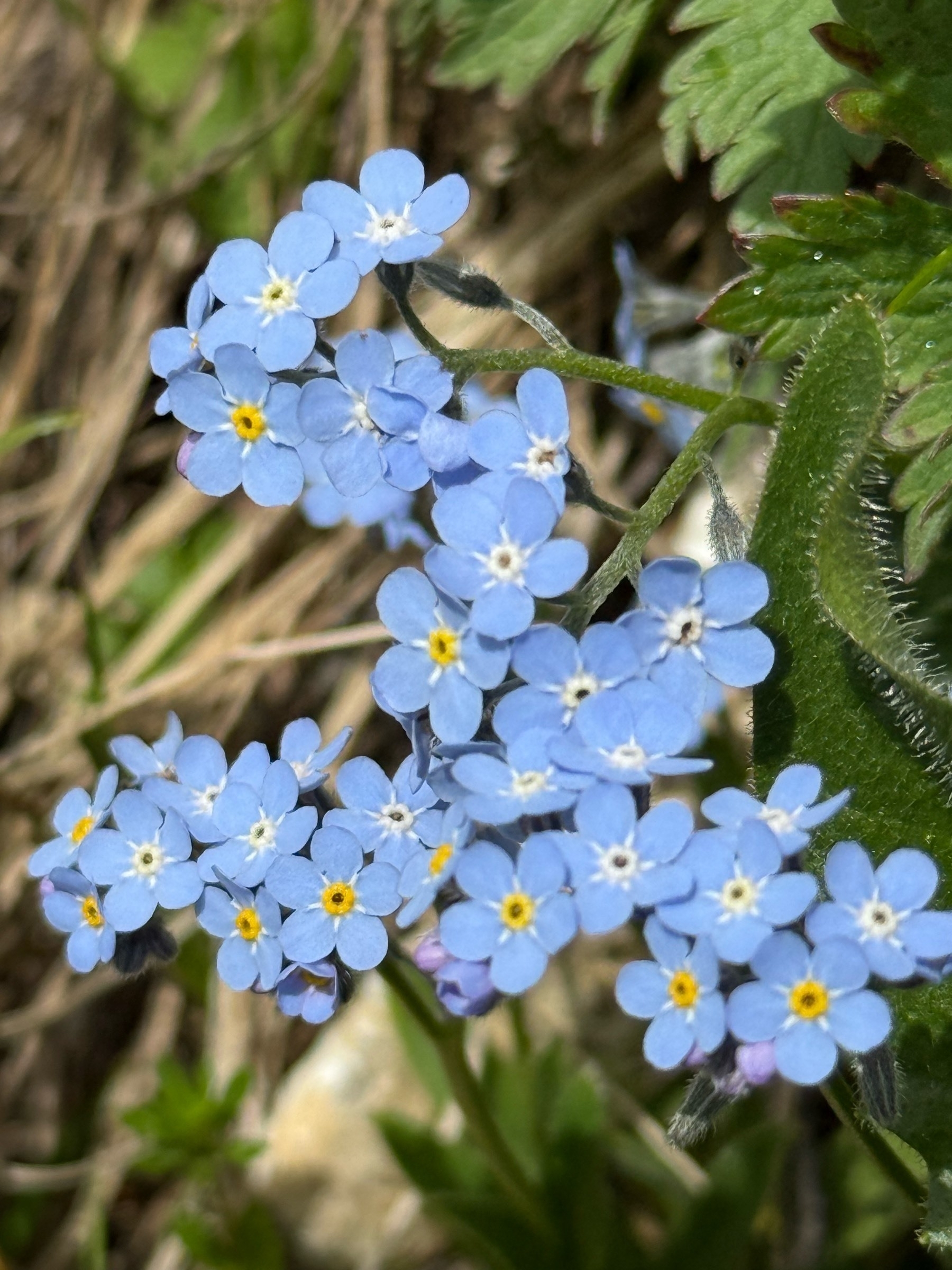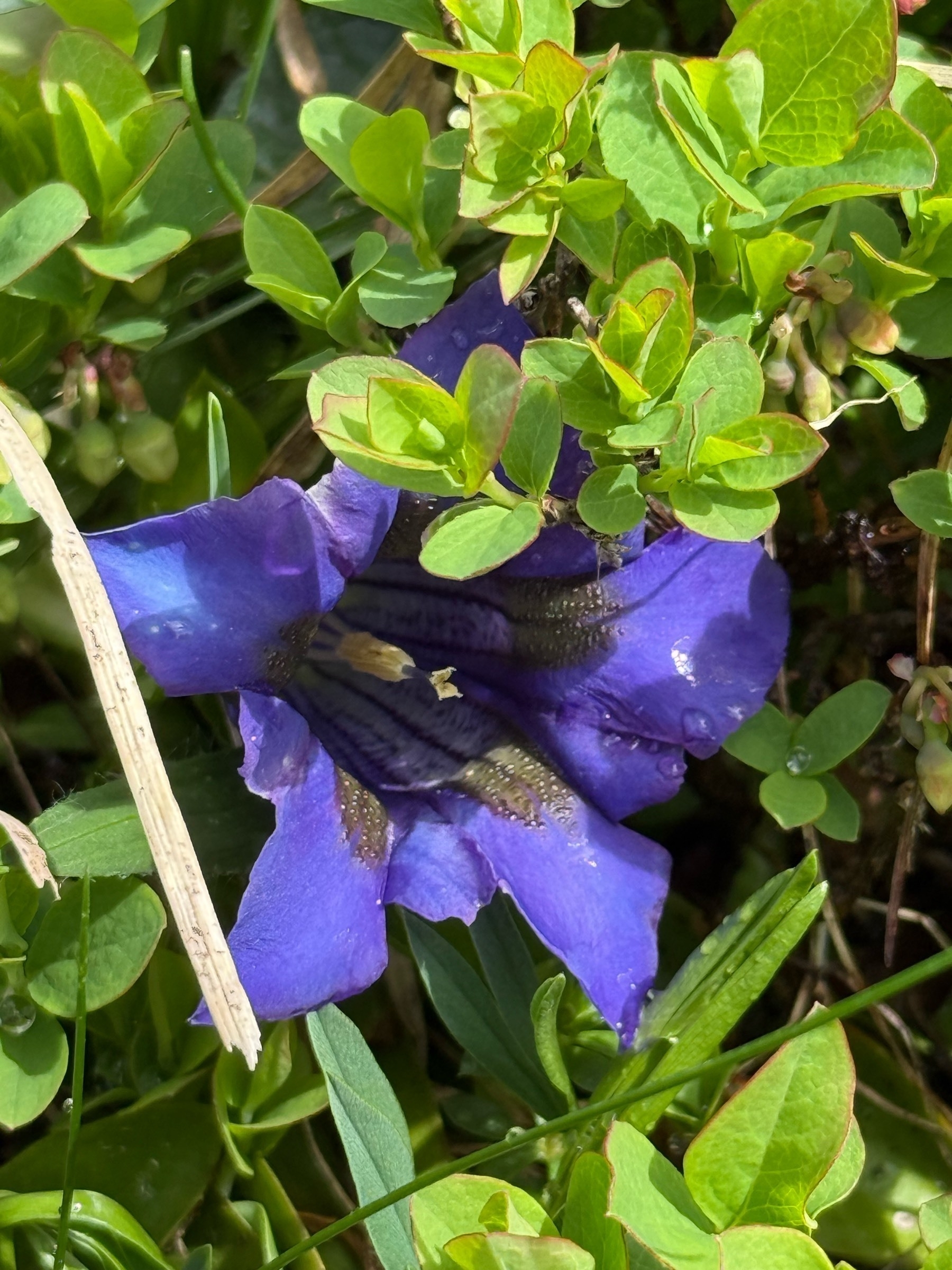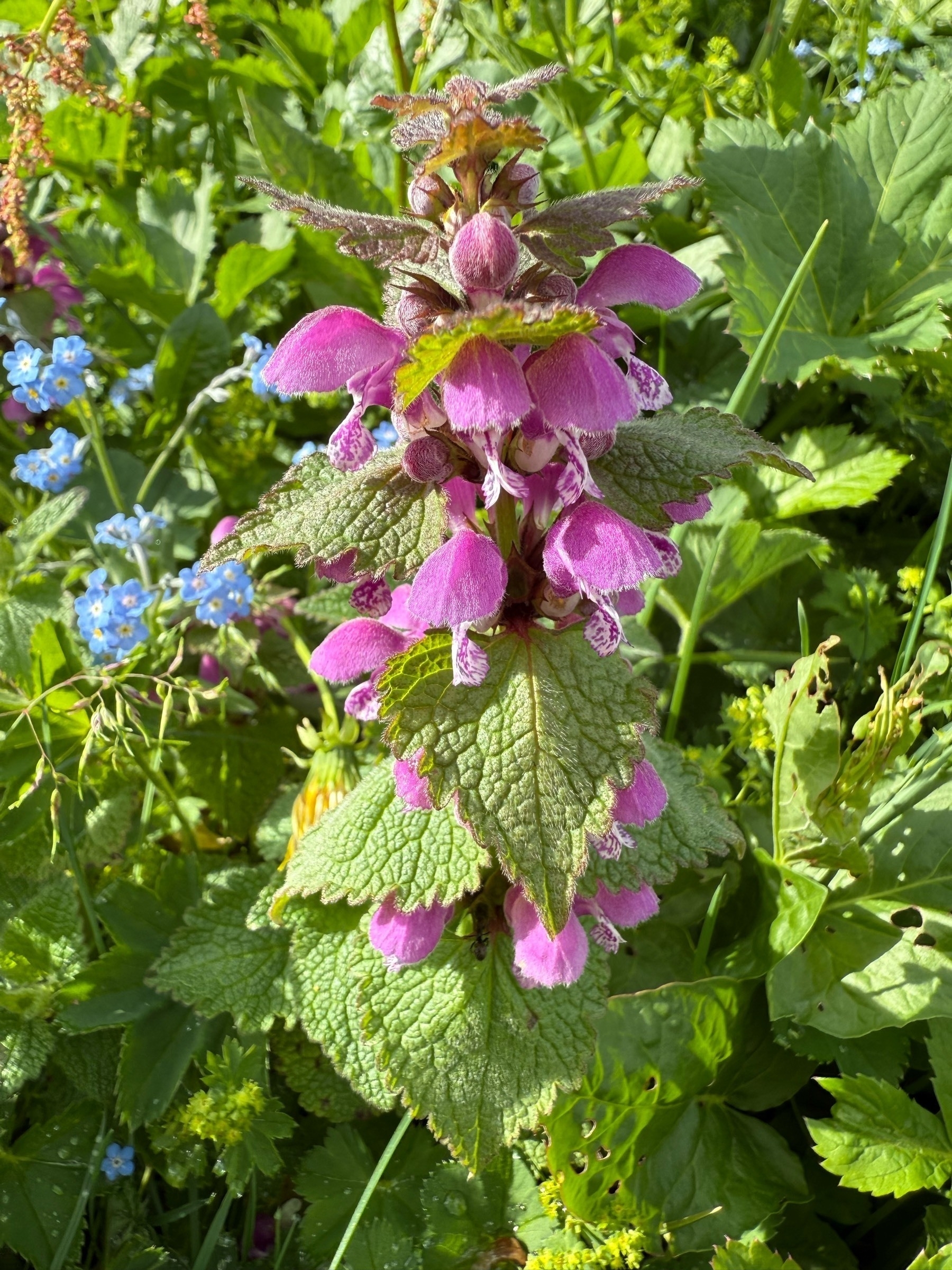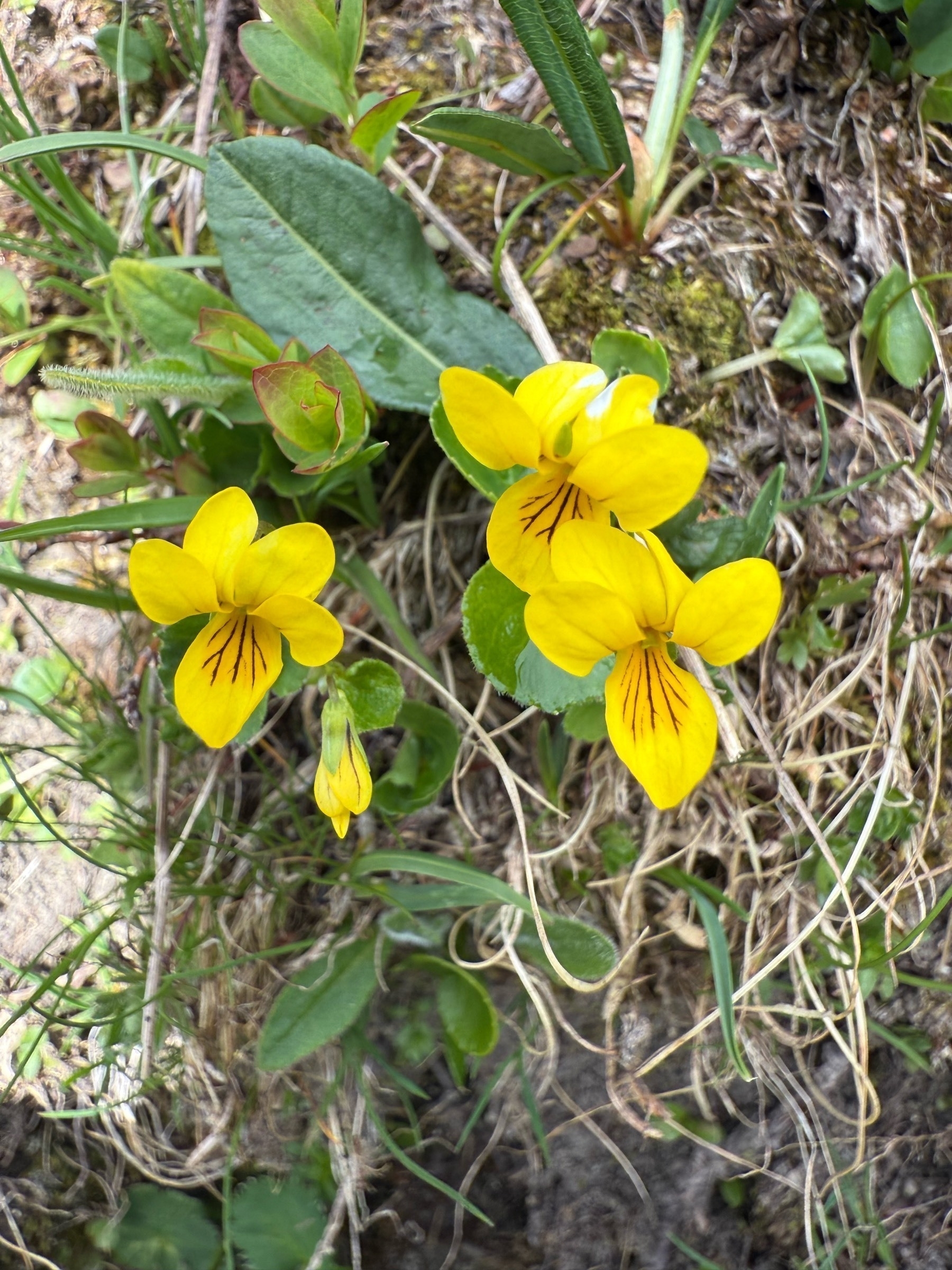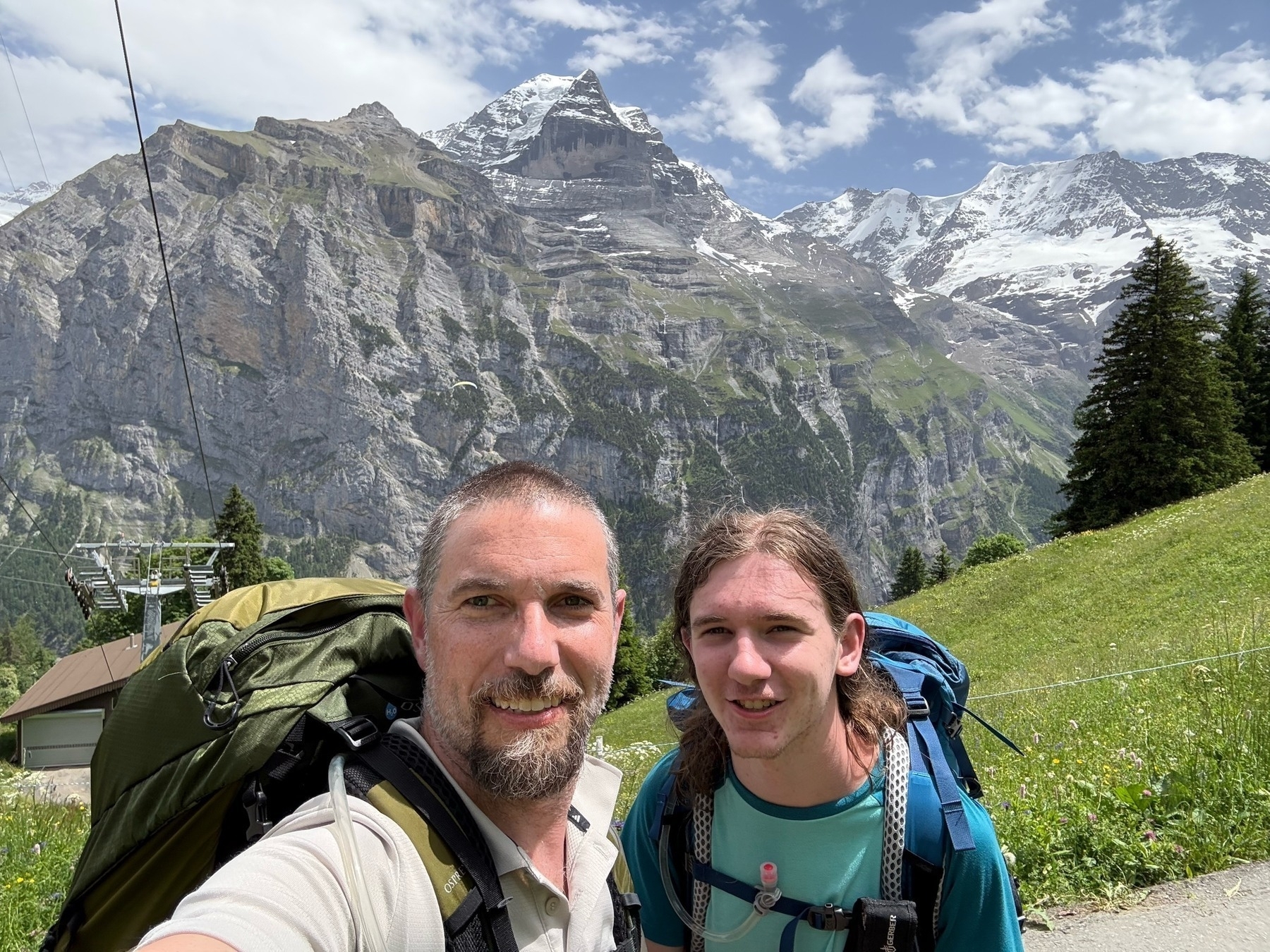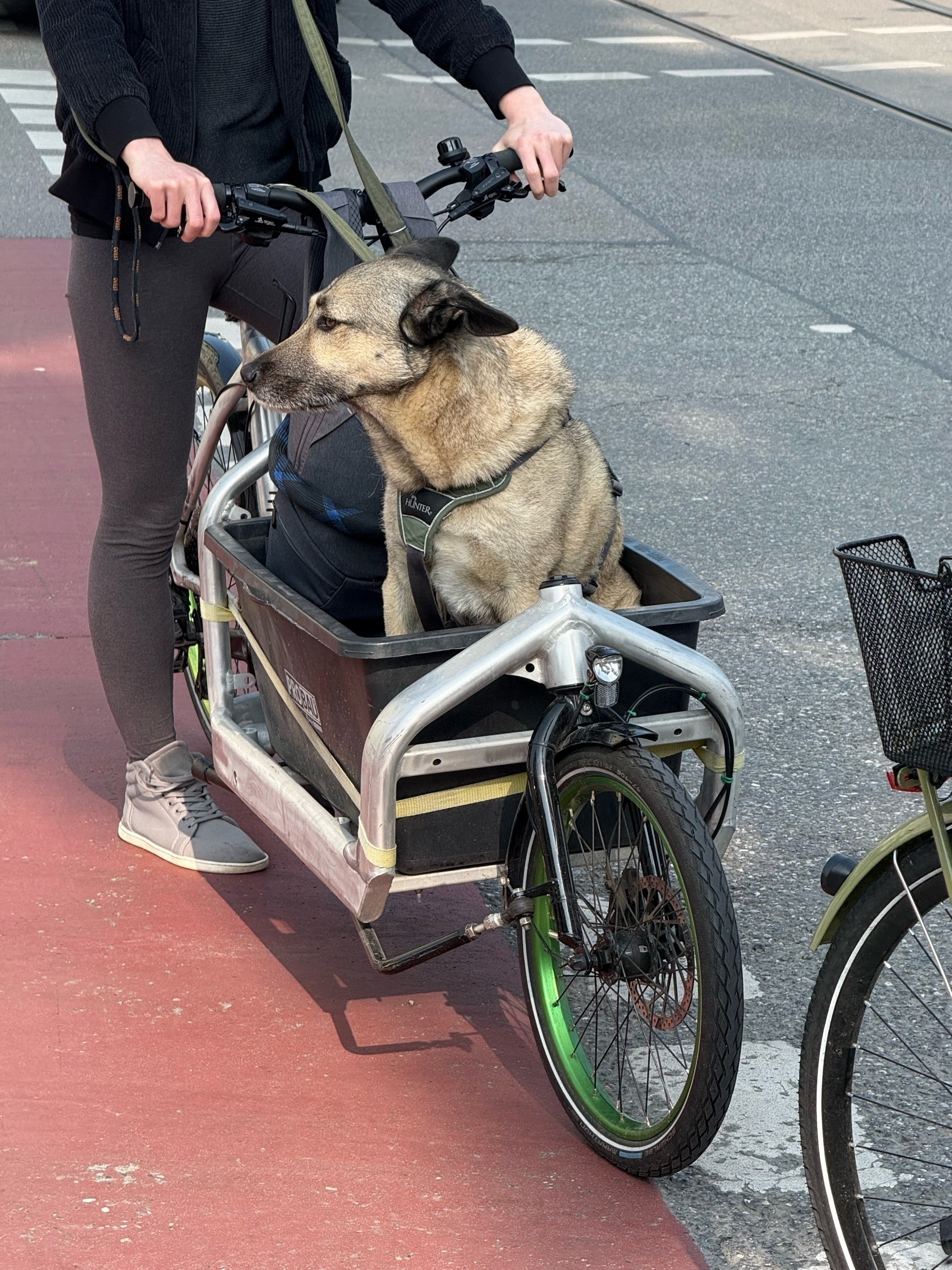Eisriesenwelt, near Salzburg, a huge ice cave.
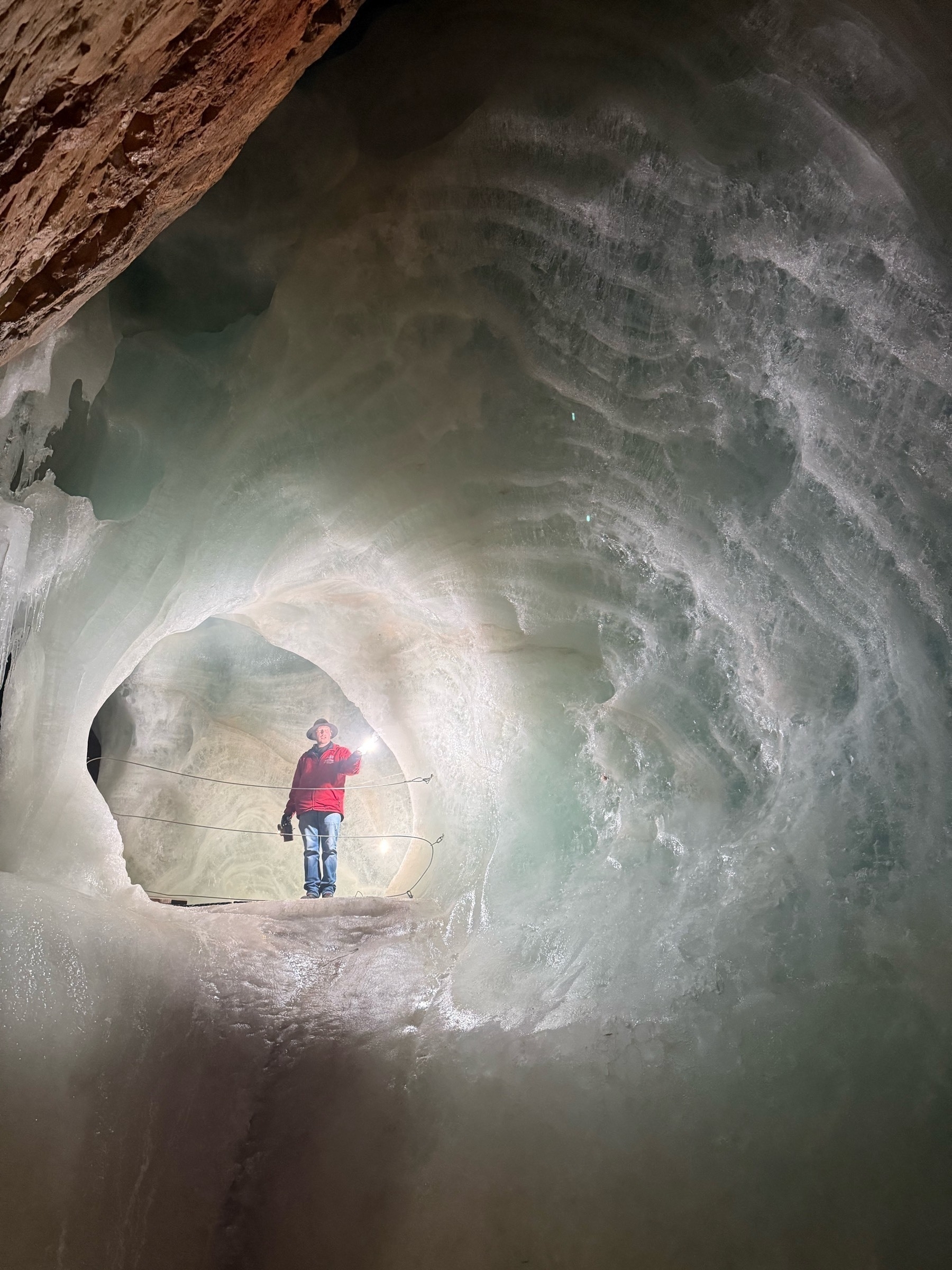
Wade was super excited that going into the ice cave they handed out actual carbide lamps. I confess I did not know what that was. It is pretty cool though.
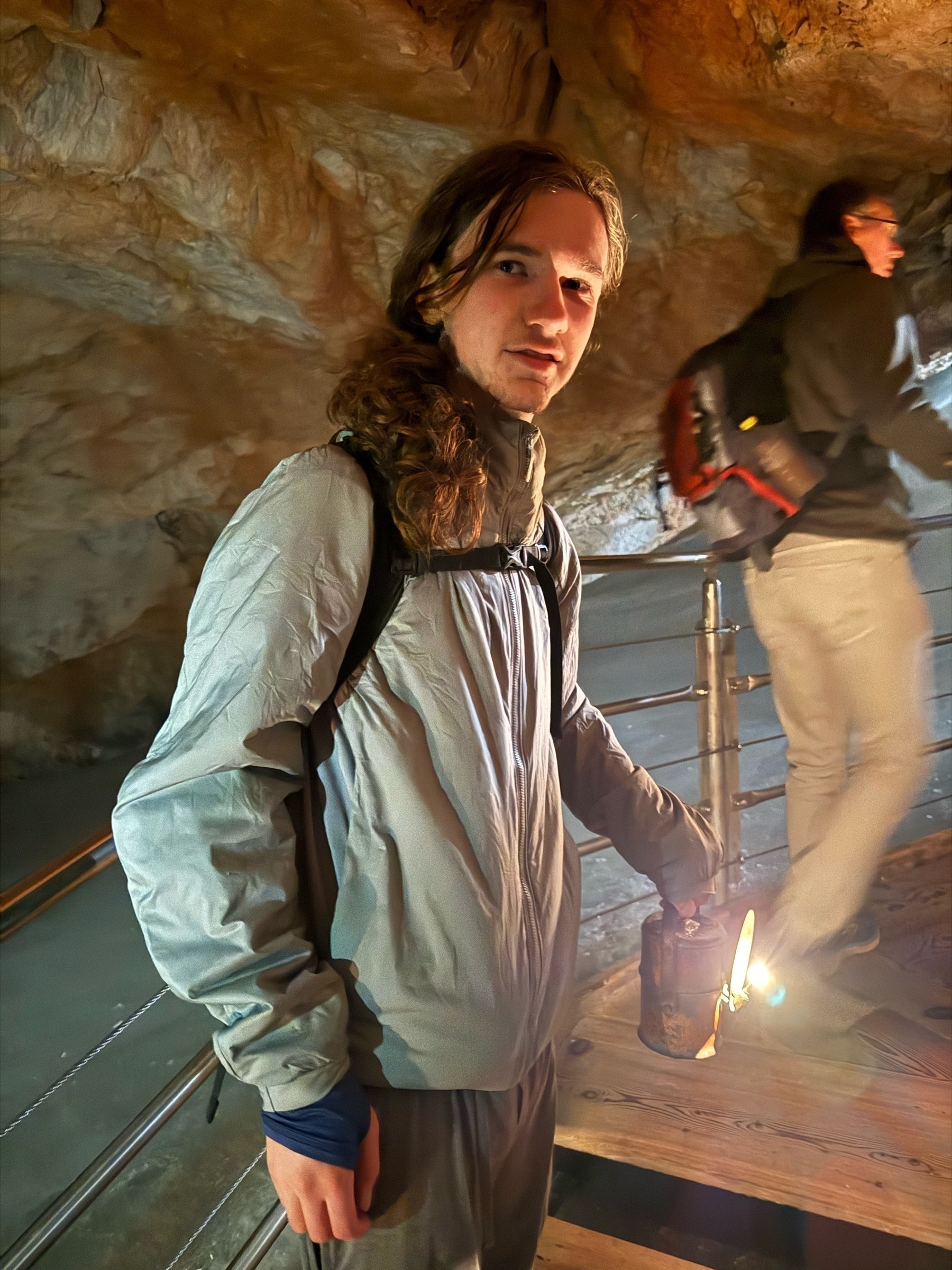
Ice cave selfie
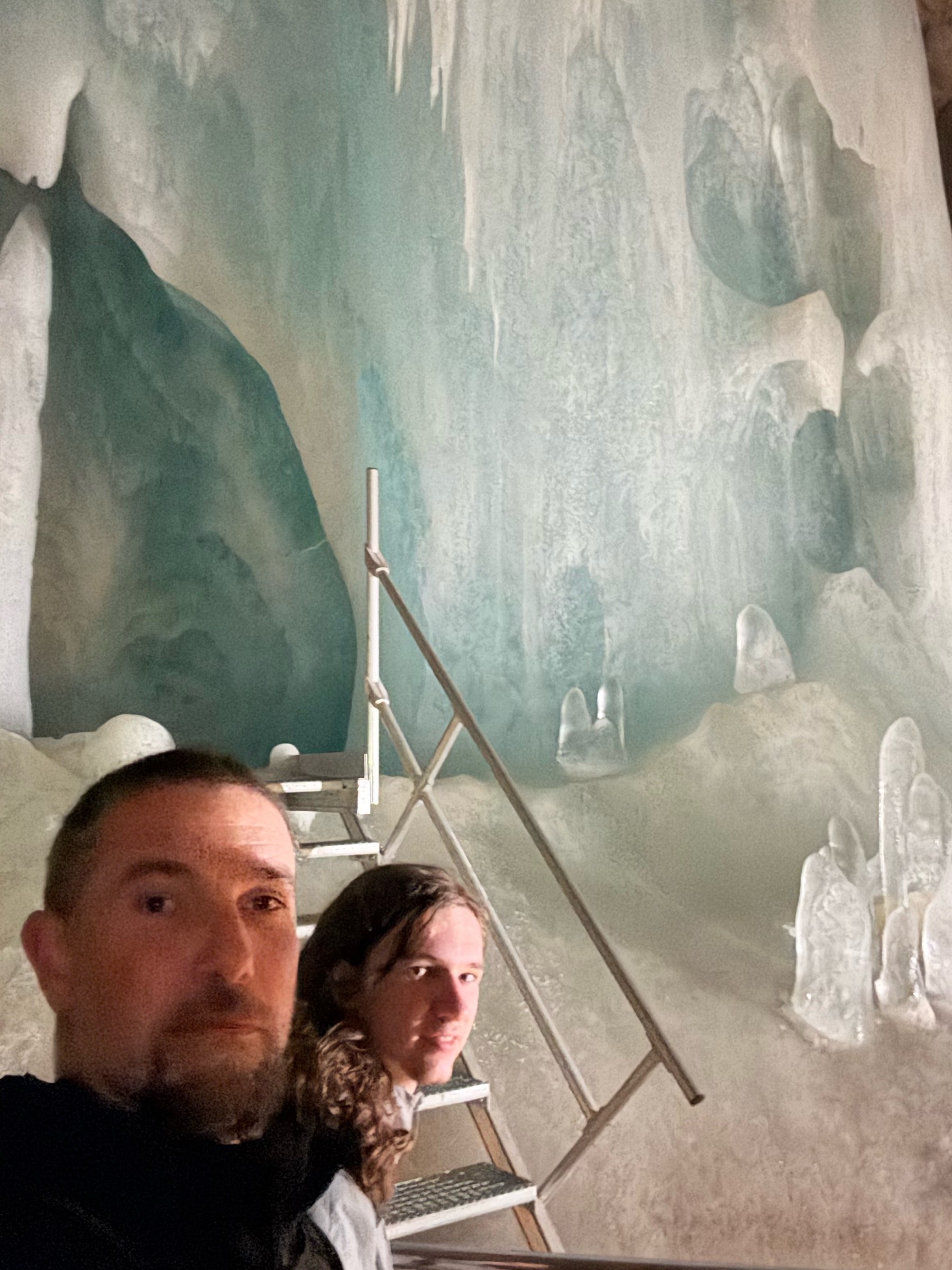
Ice “Elephant”
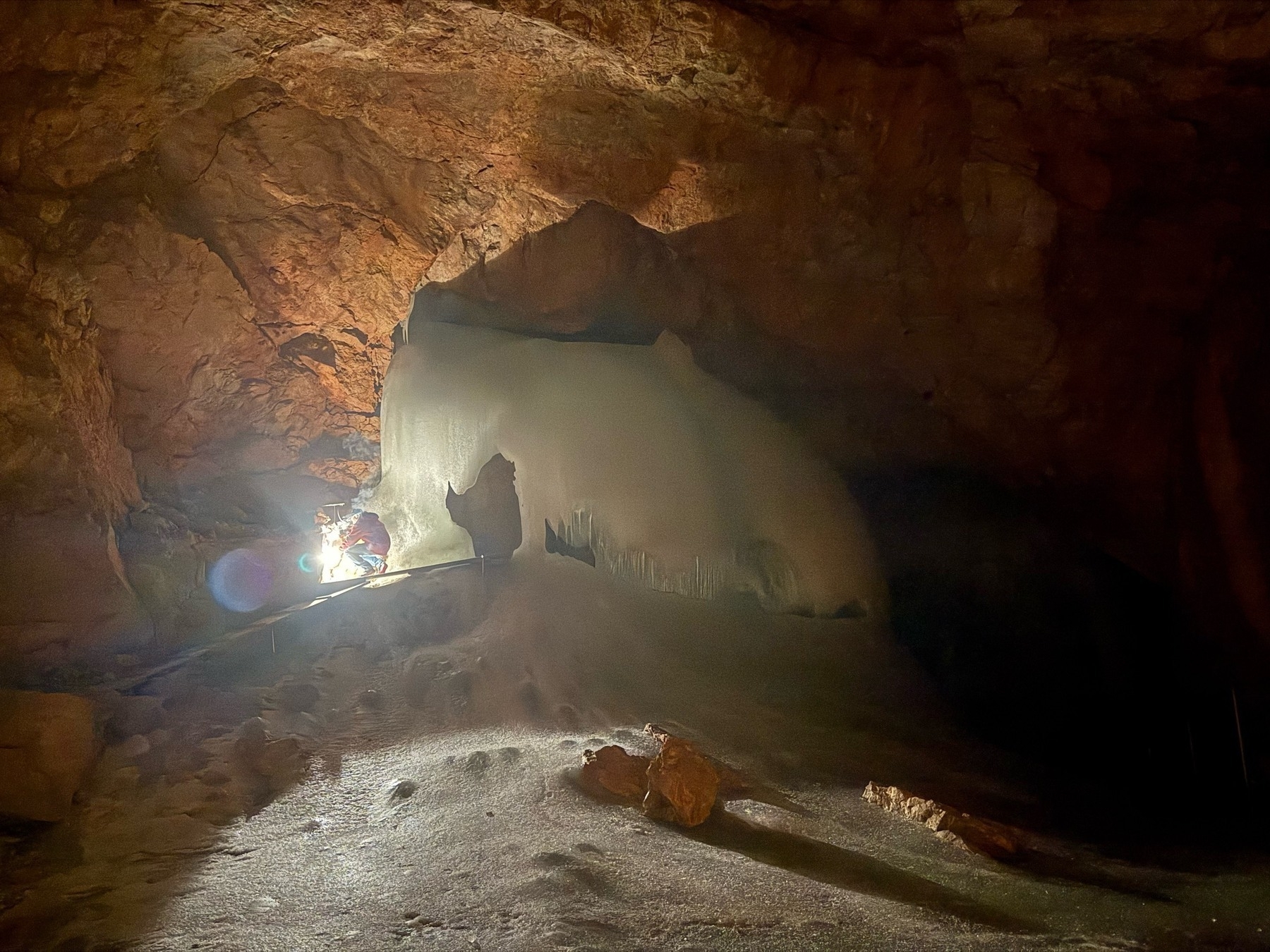
This, insanely enough, is a hiking path that passes by near the entrance to the ice cave.
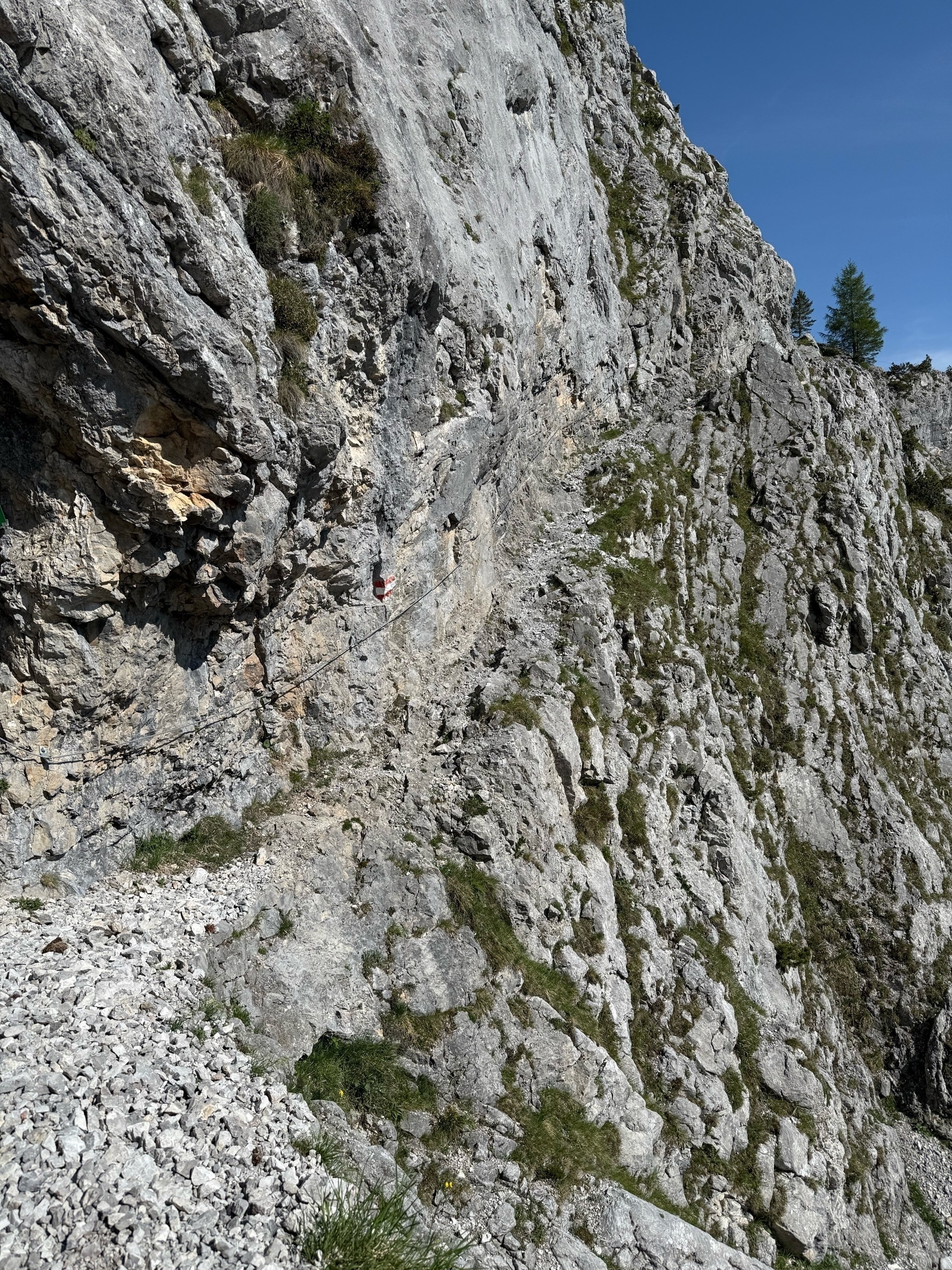
Salzburg’s eponymous salt mine. Wade is an enjoyer of this road-header cutting head (carver of mine walls).
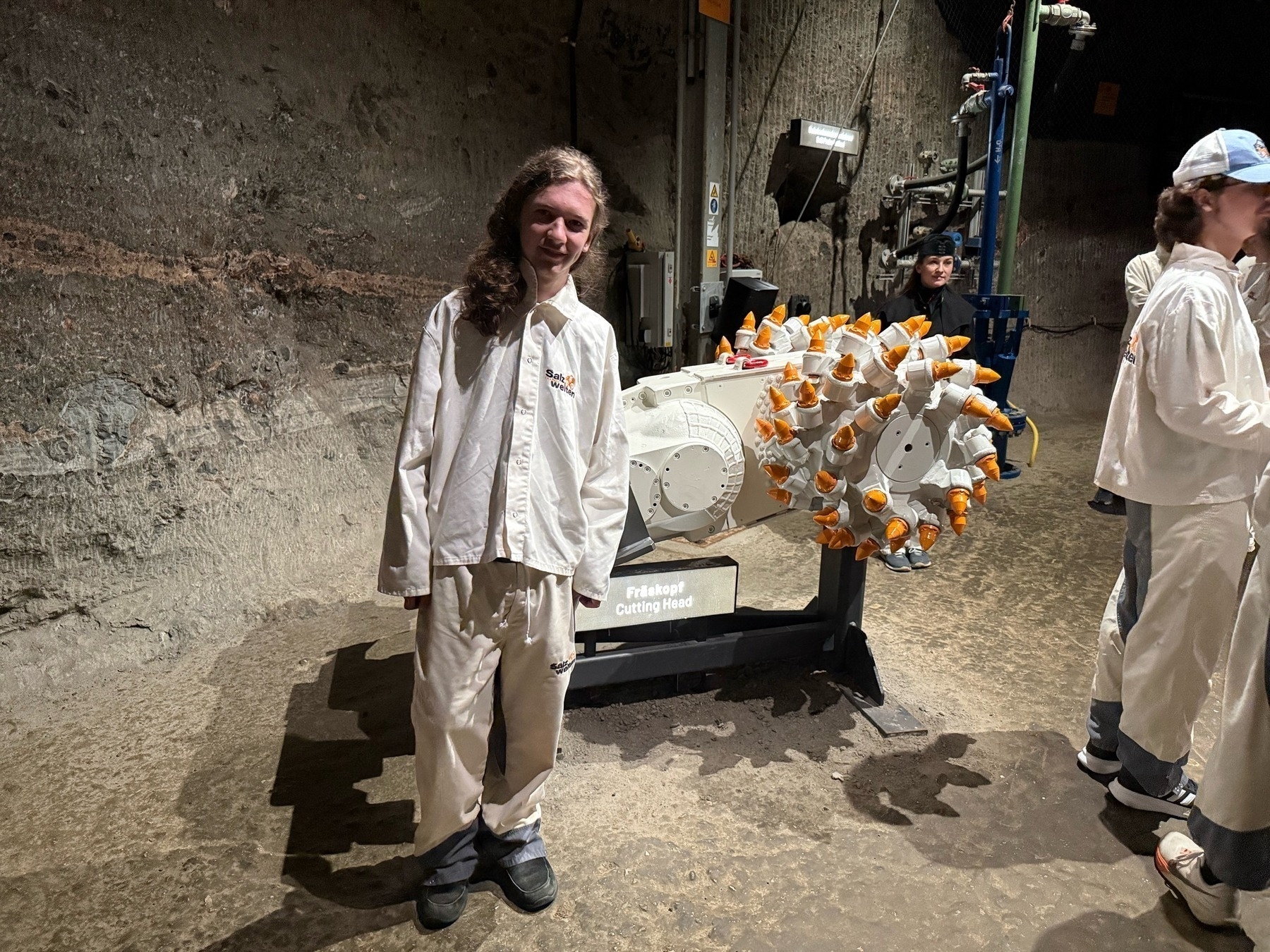
Also, the Swiss surf in the river. They tie a long bungee to a bridge, grab a hold of it, use the strong current to pull it taught, and then … use it to surf the river.
The river Aare. It’s so incredibly blue because it’s basically glacier melt (?). So it’s also quite cold. But the Swiss love to swim in it, and I admit it was very tempting.
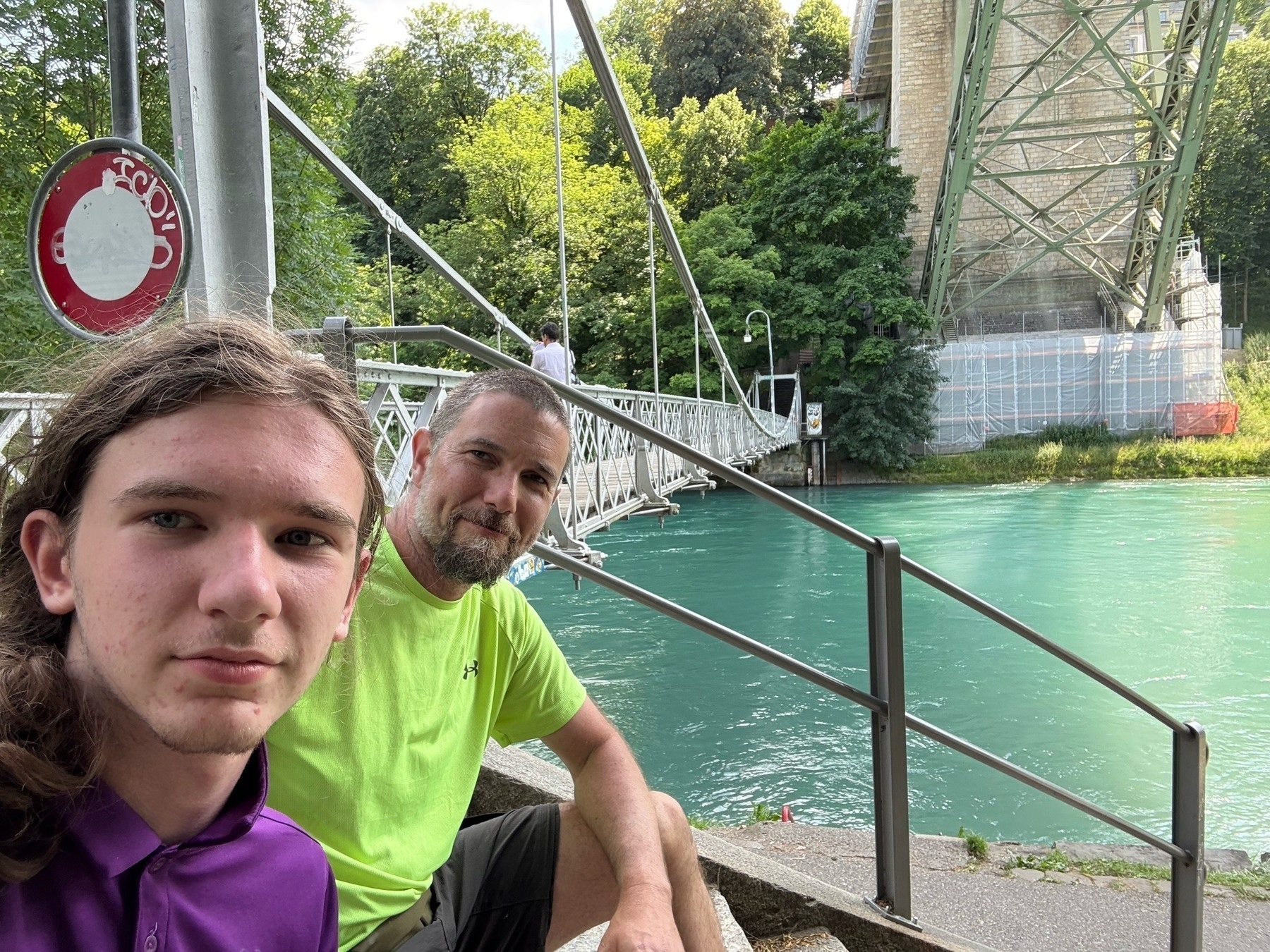
Looking down at our home for two nights, Rotstockhütte, during our second day’s hike - an out-and-back climbing to an elevation of 7,668 ft before being turned back by high water across the trail, from the combination of snow melt and heavy overnight rains.
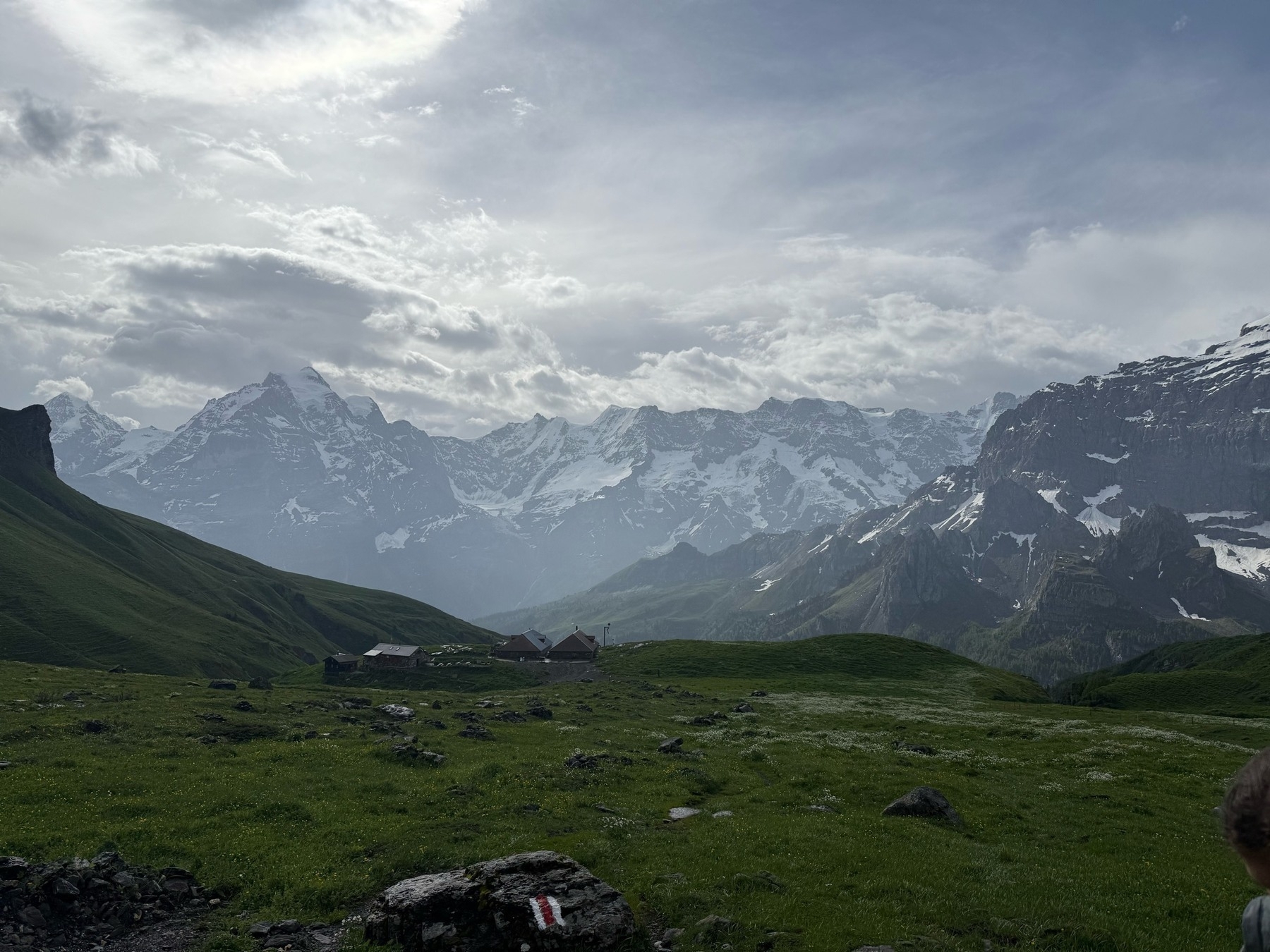
Zech Zollverein - the huge coal cleaning & coke-making plant central to the emergence of the Industrial Revolution in Germany’s Ruhr Valley.
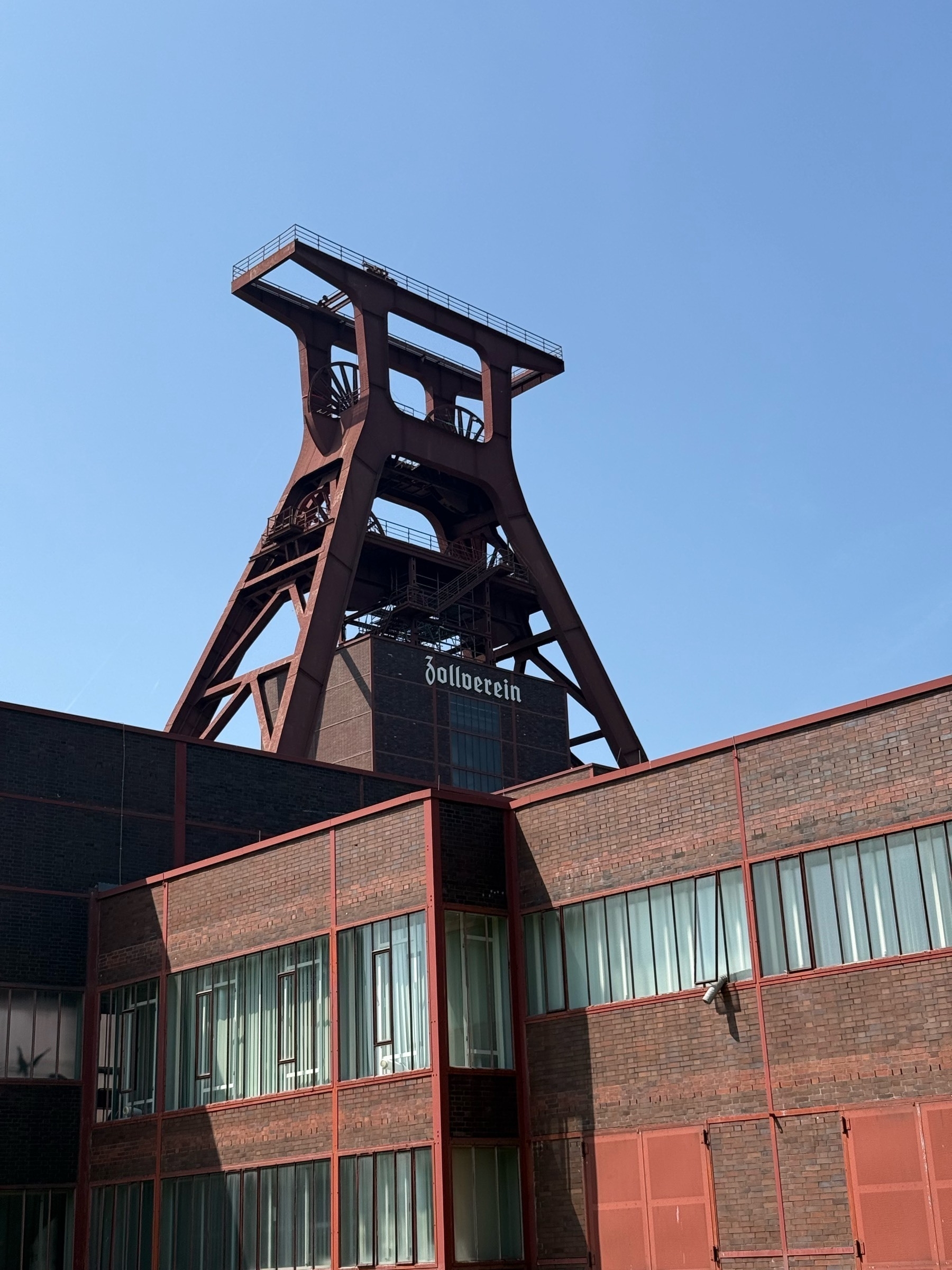
Some of the machinery inside Zech Zollverein
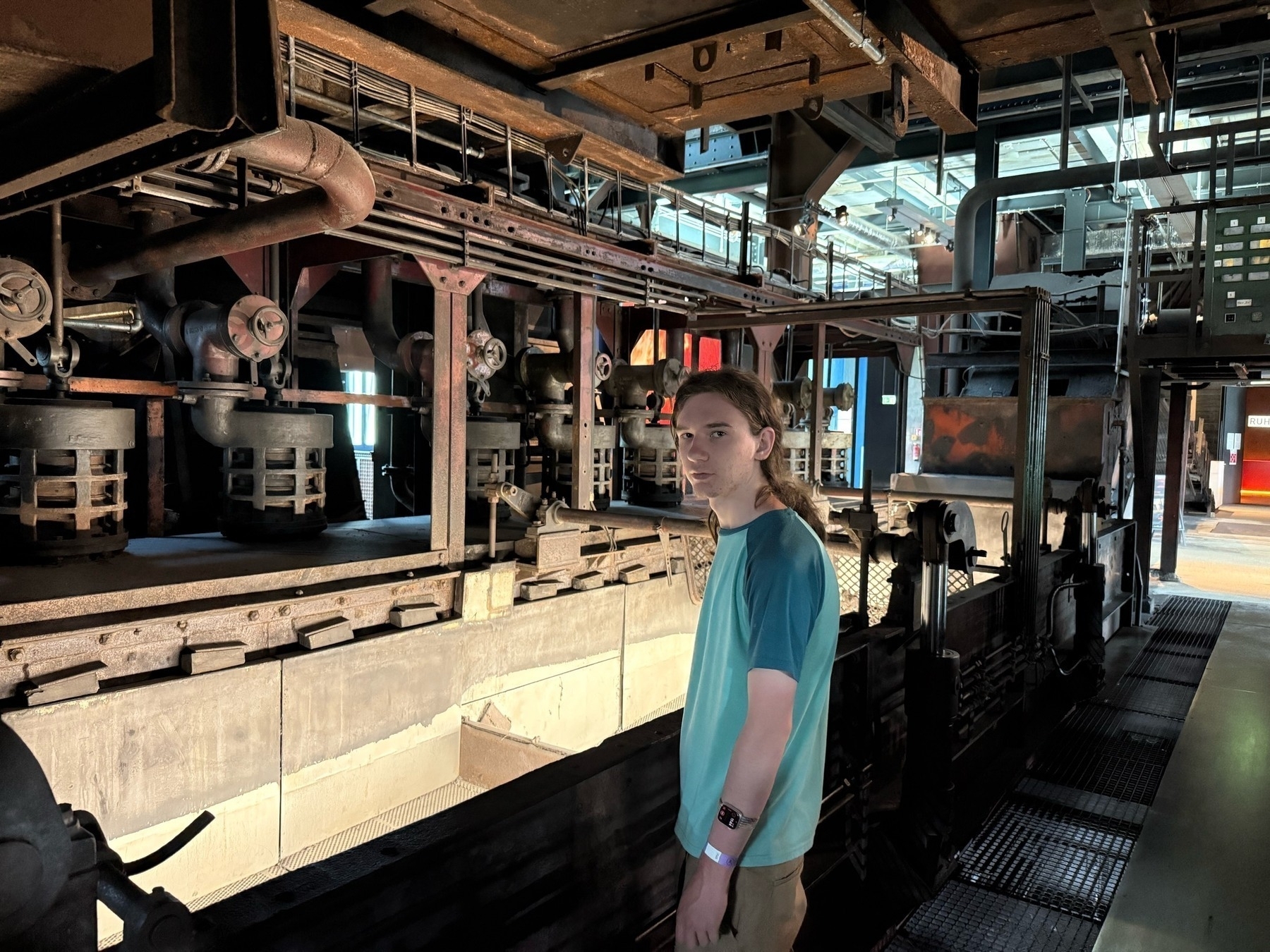
The Netherlands’ “Delta Works”! Behind us, here, you can see the “Oosterscheldekering” component of the storm surge barrier system.
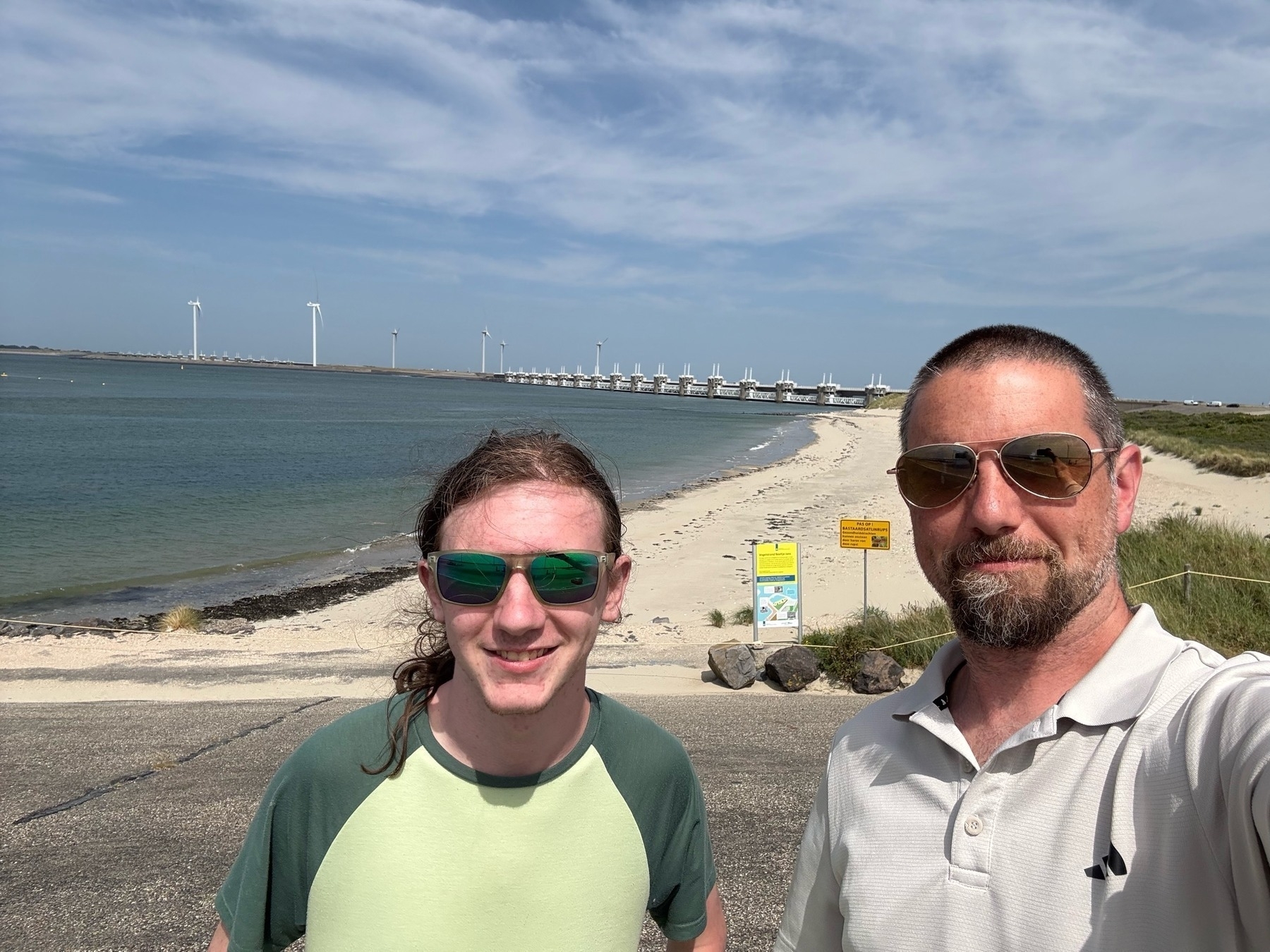
The “Maeslantkeringweg” component of the system - a huge pair of arms that can rotate into place blocking the channel when needed, but allow port traffic the rest of the time.
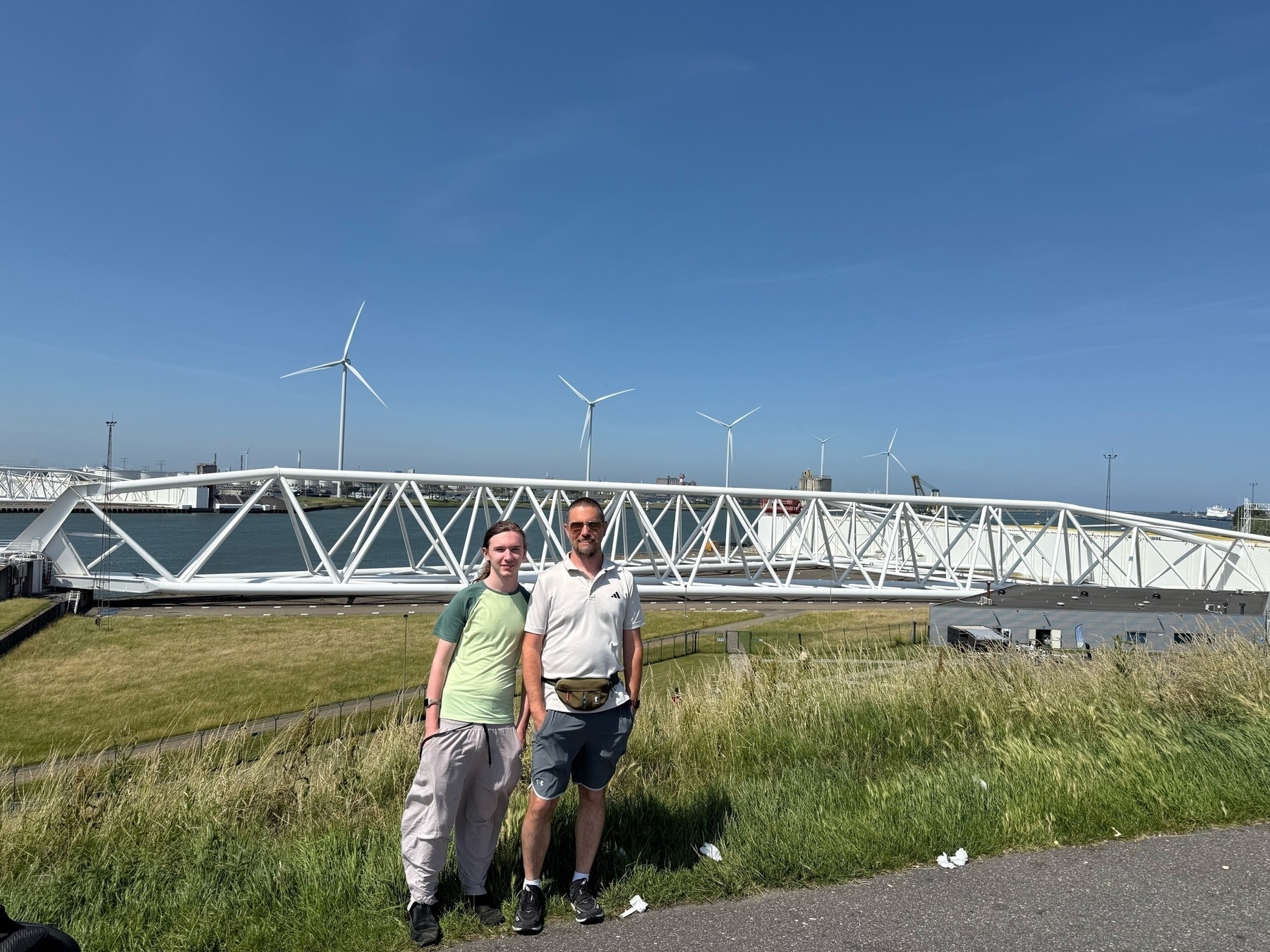
Rented bikes and rode from central Amsterdam out to Sloten to visit the (still operational!) old wooden windmill there. This is Wade inside the upper, rotating part of the windmill; above him is an old weir. The guide said that in the old days, the mill operators weren’t paid much, but were given fishing rights in the canals, and made most of their money smoking & selling fish they caught there.
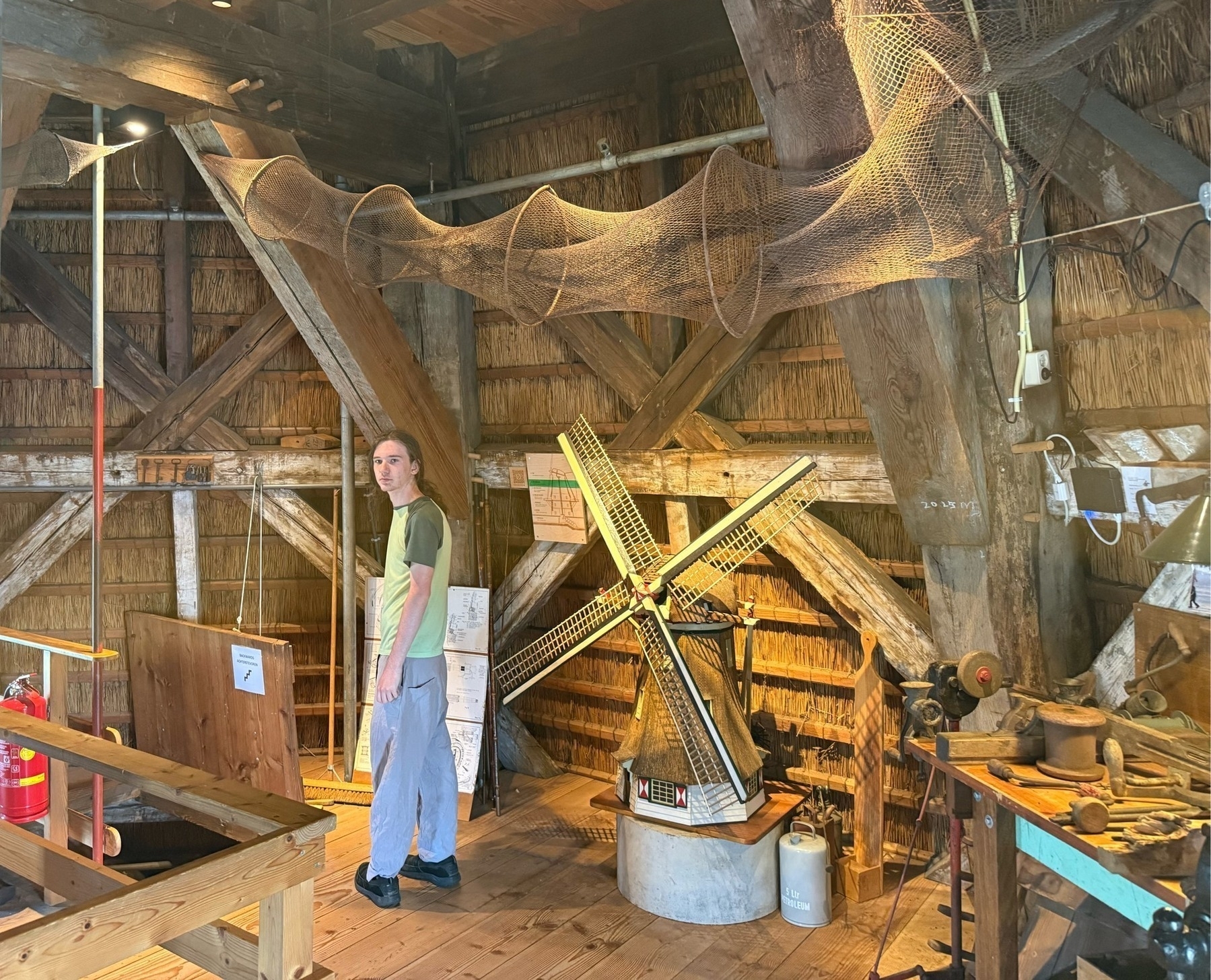
On the far side of the Salzach river is Austria; on the near side, below us, the town of Burghausen, which is celebrating the 1000th anniversary of its founding, this year.
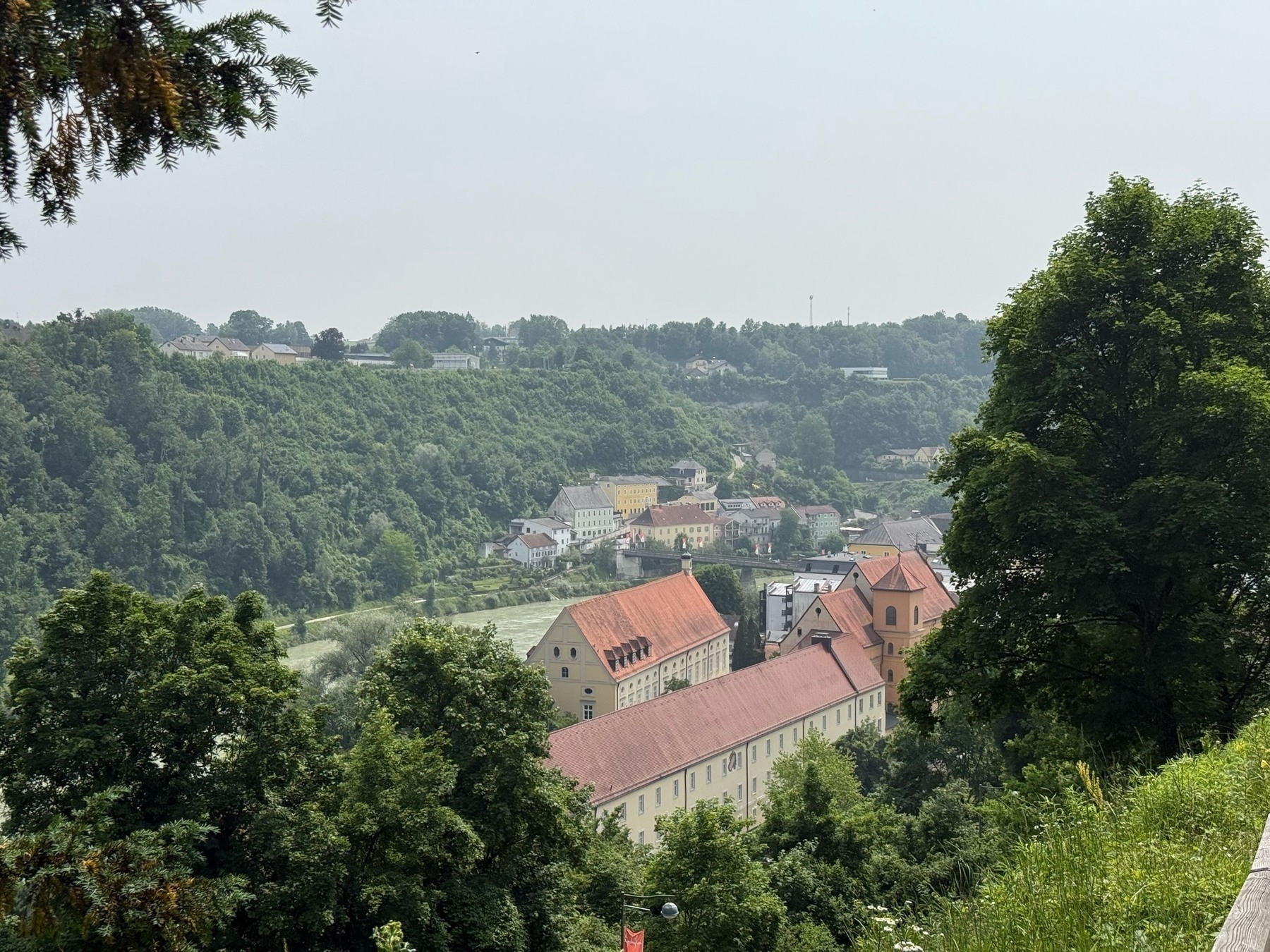
Castle Burghausen, built in the 13th century. This is the view (from the main tower) of the castle-complex’s five courtyards, stretching out into the distance.
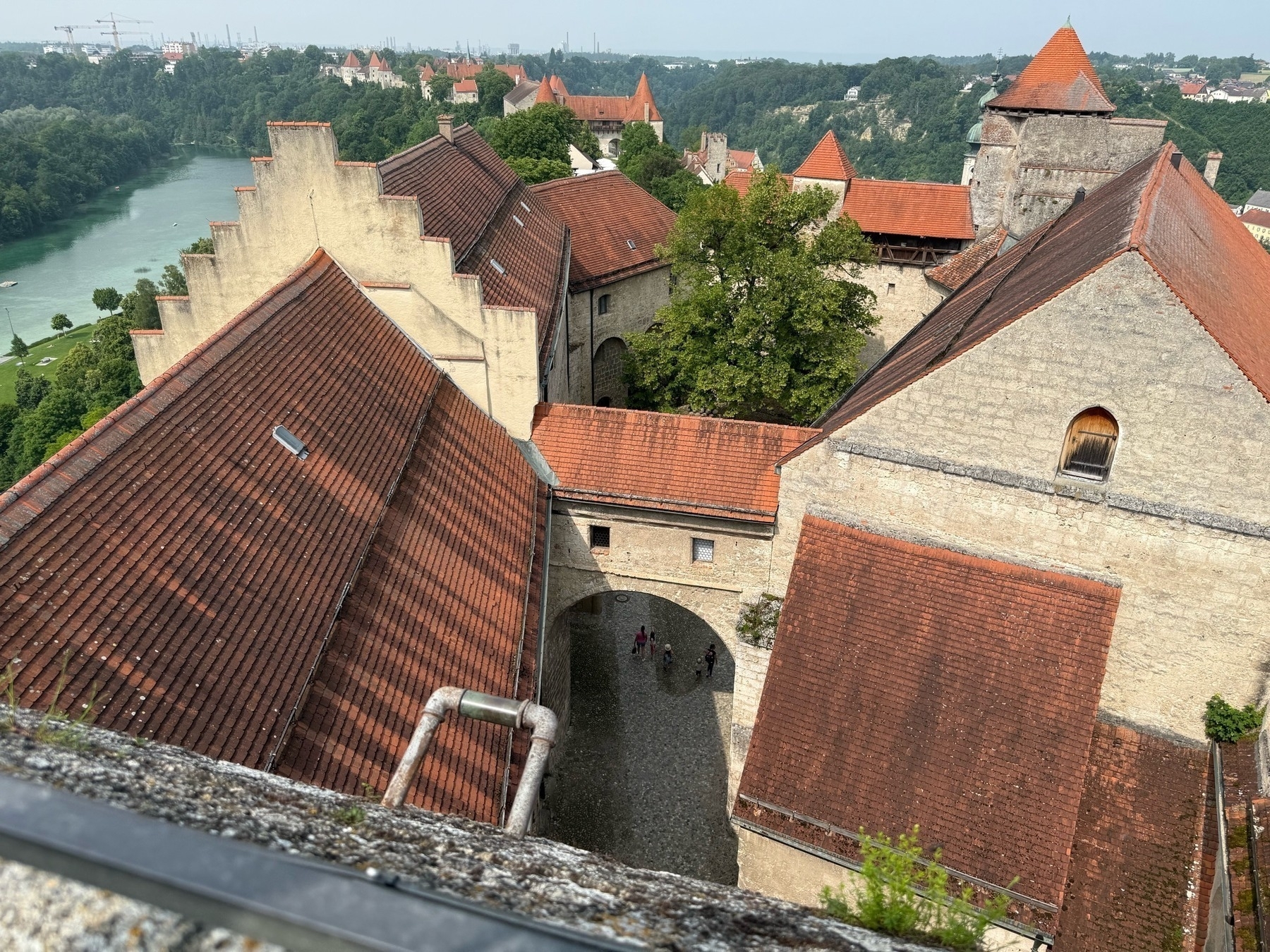
The castle’s private chapel
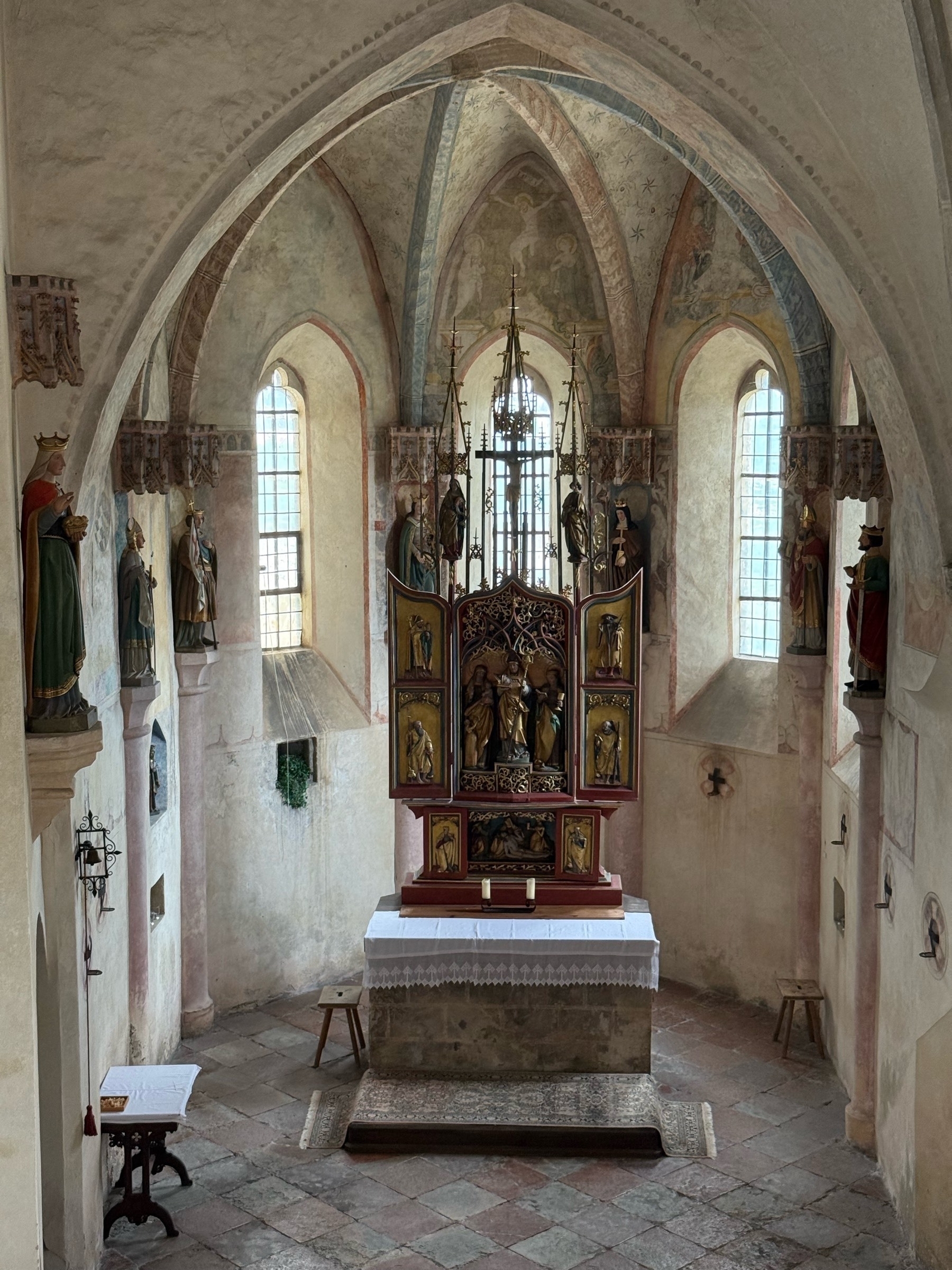
A display about the construction techniques the castle’s builders would have used. The main walls were built of “Tuff”, a lightweight & easily-worked stone composed mainly of compressed ash from volcanic eruptions. Also used extensively by the Romans, we learned.
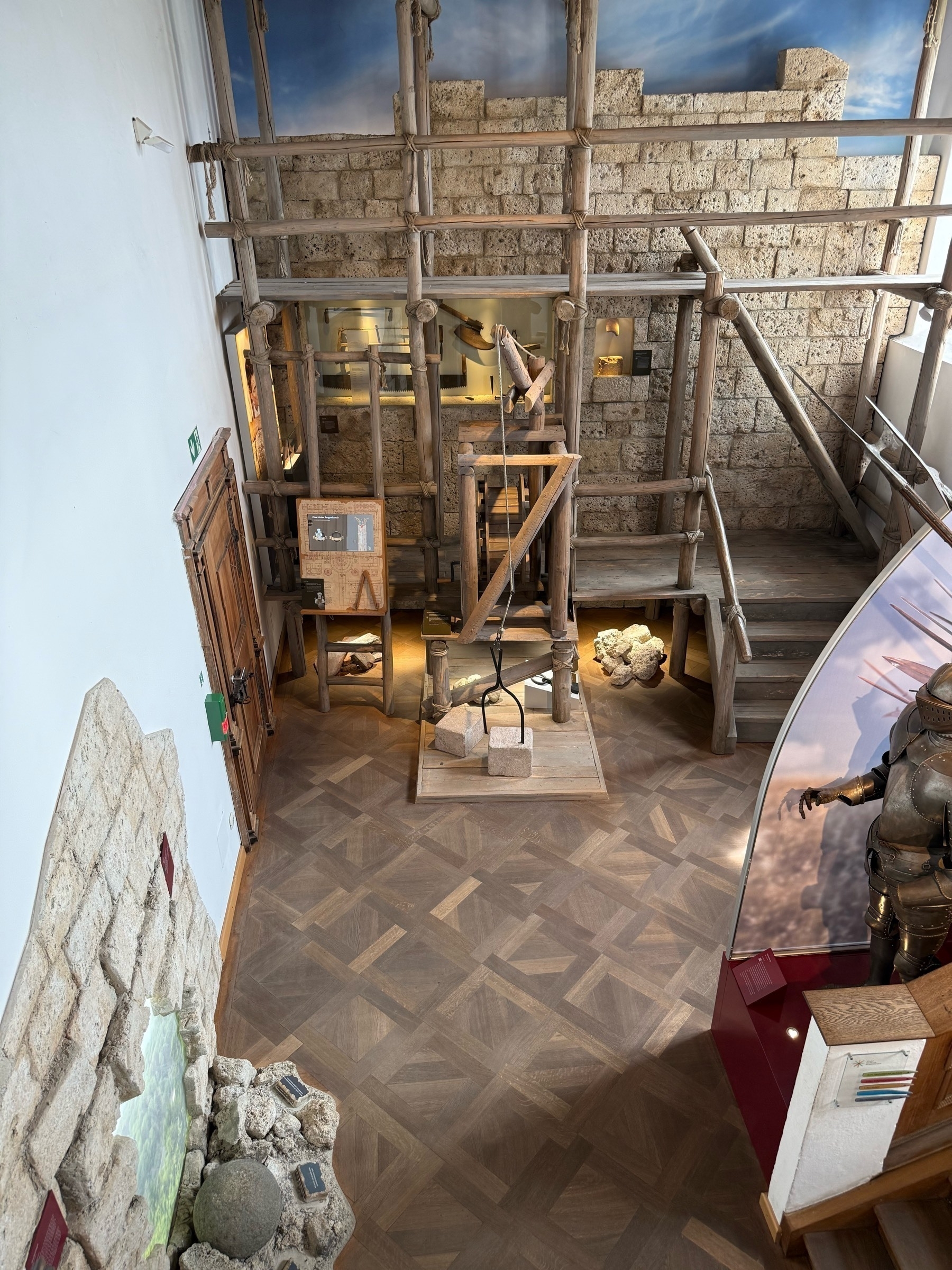
The Rammelsberg mine. Actively mined for over 1000 years, they say.
Ferropolis, in Gräfenhainichen, Germany - The Bagger 197 bucket-chain excavator. If you zoom way in you can see Wade.

The treads alone are taller than a person.
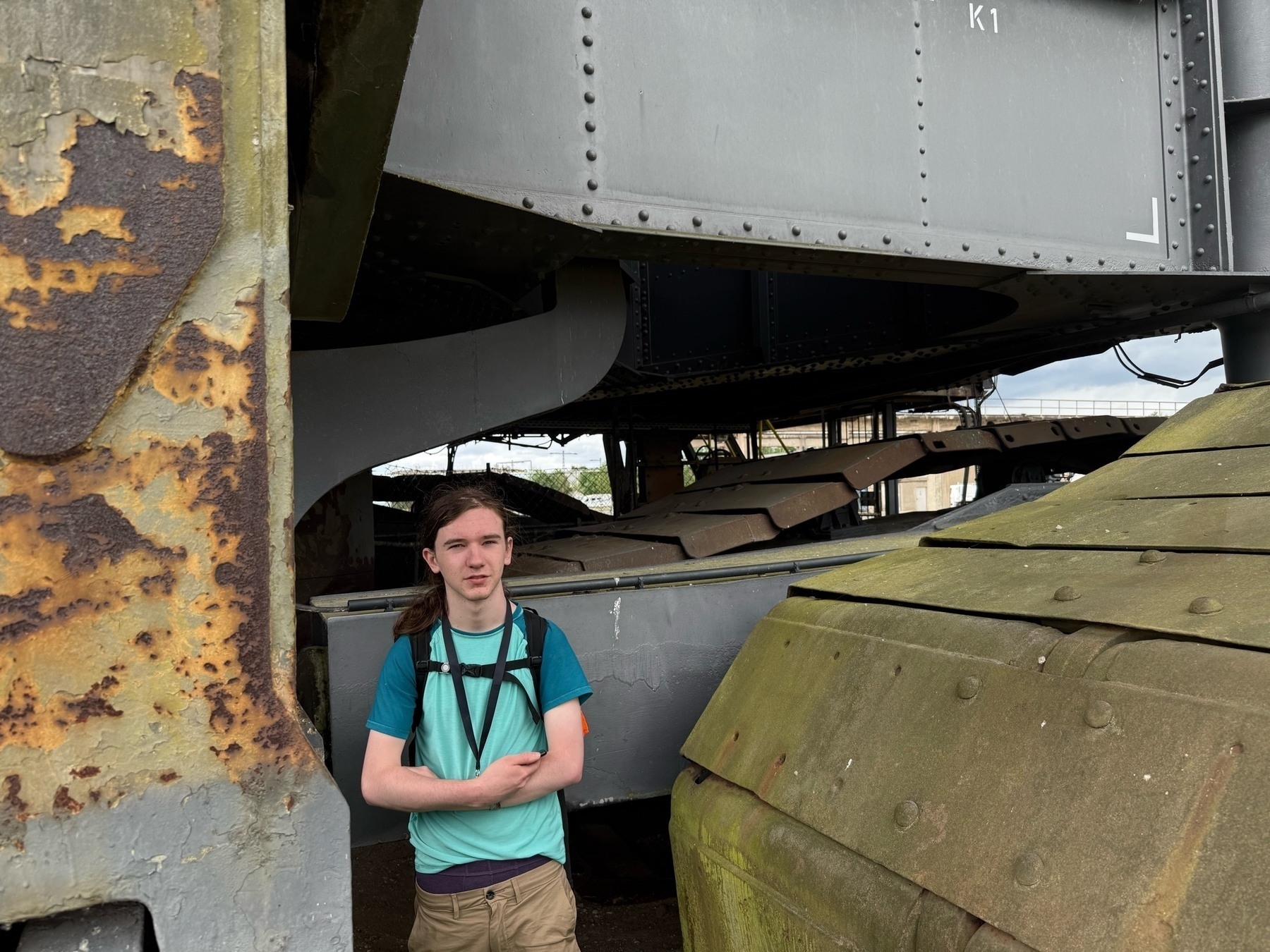
The classic true bucket-wheel excavator!
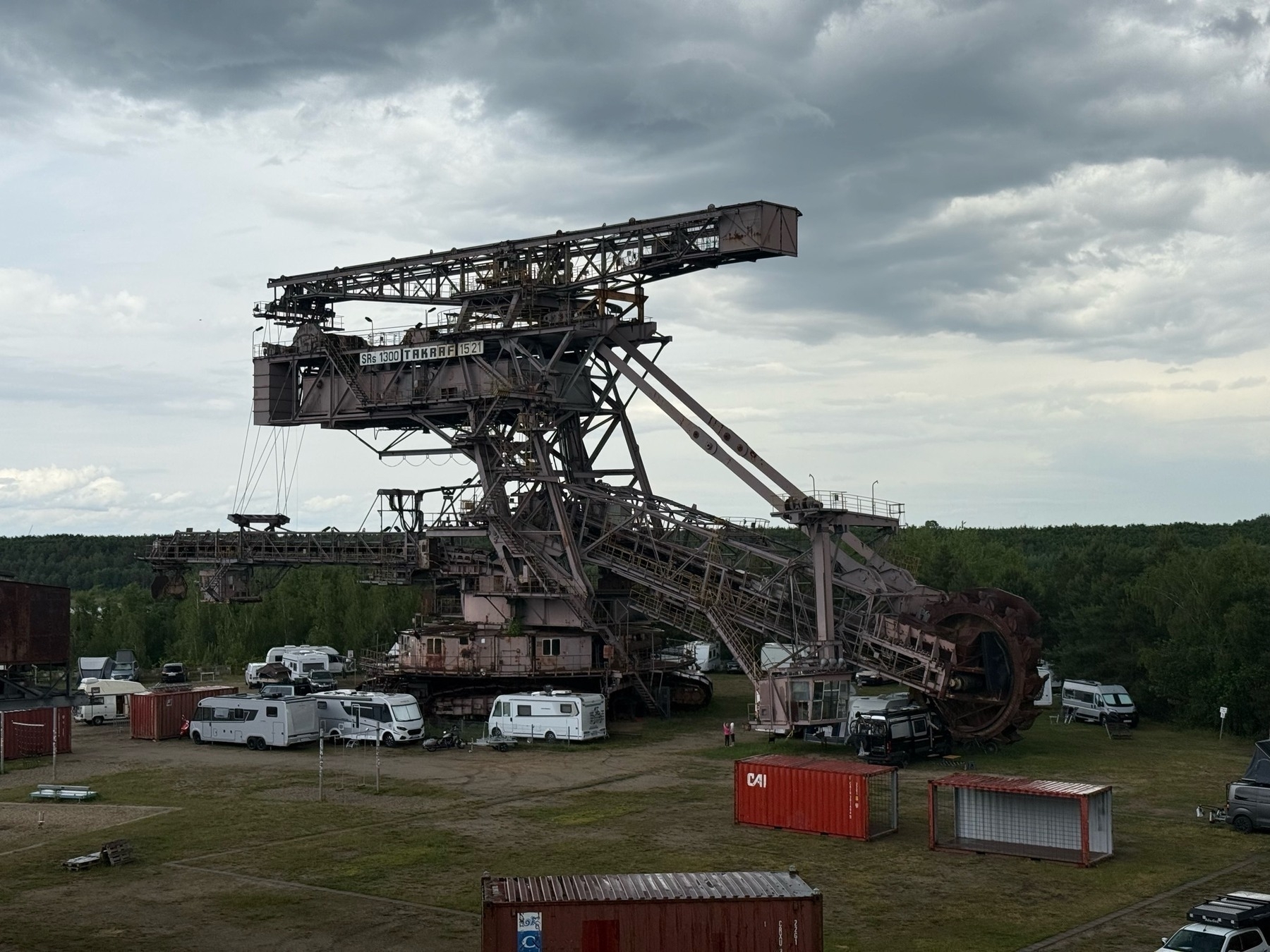
Wade, next to the wheel’s buckets (which have bottoms made of chains)
